About Custom Application Signatures
Custom application signatures reduce unknown traffic, provide application visibility, and give you more granular control over applications on your network. For example, you may believe office productivity has decreased since the FIFA Women’s World Cup began. You can create custom signatures for the FIFA landing and live streaming pages and view FIFA activity in the ACC and Traffic logs ( as long as current security policies allow the traffic). From there, you can create a report, configure a QoS policy, or block the application by adding it to security policy.
An application signature identifies a pattern located within packets from an application or application function. This pattern uniquely identifies the application or function of interest. The App-ID ™ traffic classification system relies on application signatures to accurately identify applications in your network. Palo Alto Networks has developed App-ID signatures for many wellknown applications. (See Applipedia for a complete list). However, the volume of commercial applications and the nature of internal applications means that some applications do not have a signature. Such traffic receives “unknown” classification in the ACC and Traffic logs alongside potential threats. To properly classify this traffic and enforce security policy rules, you can create a custom application signature .
Custom application signatures enable you to:
• Minimize “unknown” traffic on your network
• Identify internal applications or special interest applications, such as a custom payroll application or sports live streaming
• Monitor application usage in the ACC and Traffic logs
• Explicitly define allowed applications and application functions (for example, allowing Slack for instant messaging, but blocking file transfer)
• Perform QoS for a specific application
• Identify nested applications, such as Words with Friends in Facebook
![]() Custom applications take
precedence over predefined applications when traffic matches both a
custom-defined signature and a Palo Alto Networks signature. Accordingly,
Traffic logs reflect the custom application name once the new application has
been configured.
Custom applications take
precedence over predefined applications when traffic matches both a
custom-defined signature and a Palo Alto Networks signature. Accordingly,
Traffic logs reflect the custom application name once the new application has
been configured.
About Custom Threat Signatures
Our next-generation firewalls allow you to create custom threat signatures to monitor malicious activity or integrate third-party signatures. As with Palo Alto Networks threat signatures, you can detect, monitor, and prevent network-based attacks with custom threat signatures. Build your signature by examining packet captures for regular expression patterns that uniquely identify spyware activity and vulnerability exploits. The firewall will scan network traffic for these patterns and act based on the action specified during configuration upon threat detection. Be sure to use custom threat signatures as part of anti-spyware and vulnerability protection profiles to detect and handle command-and-control (C2) activity and system flaws that an attacker might attempt to exploit.
You can also define a combination signature for brute force attacks —a custom threat signature that triggers when traffic matches a specified pattern a certain number of times in a given time interval.
• Create a Custom Threat Signature
• Create a Combination Signature
Combination
Signatures for Brute Force Attacks
Combination signatures detect and prevent brute force attacks. A combination signature assigns a time attribute to an existing threat signature—the child signature—to form a distinct parent signature. The time attribute specifies the number of pattern matches or “hits” to the child signature and the time frame (in seconds) the hits must occur within for the parent signature to trigger. If a pattern matches the child signature alone, the default action for that signature occurs.
You can narrow the trigger conditions by including aggregation criteria, which define what the parent signature counts as a hit. You can select from “source,” “destination,” and “source-and destination.” If you wanted to count the number of hits to a particular destination IP address, you would set the aggregation criteria to “destination.” To count all hits from a particular source, select “source.” “Source-and-destination” instantiates multiple time-windows that count the n-number of instances when a single source goes to a specific destination.
• About Custom Threat Signatures
• Create a Combination Signature
Create
a Custom Application
Signature
To create a custom application signature, you must do the following:
![]() Research
the application using packet capture and analyzer tools
Research
the application using packet capture and analyzer tools
![]() Identify
patterns in the packet captures
Identify
patterns in the packet captures
![]() Build
your signature
Build
your signature
![]() Validate
your signature
Validate
your signature
Custom application signatures require you to specify the Scope —how your signature is applied to the traffic, Context —the portion of the file or protocol where you expect to find your pattern, the Pattern , and the Operator ( Pattern Match for string contexts and Greater Than , Less Than , or Equal To for integer-based contexts).
Refer to the Custom Signature Contexts , Defining Applications and Syntax for Regular Expression Data Patterns while building your signature.
![]() Tutorial: How to Configure a Custom
App-ID
Tutorial: How to Configure a Custom
App-ID
STEP 1 | Research the application using packet capture and/or analyzer tools.
• You should understand how you’d like to control the application before all else. Do you want to limit application functionality? Create a usage report? You’ll want to examine the contents of packet captures to gather context and identify unique characteristics of the application.
![]() Consider using a tool such as
Wireshark or perform a packet capture on the firewall itself
Take a Packet
Capture for Unknown Applications
.
Consider using a tool such as
Wireshark or perform a packet capture on the firewall itself
Take a Packet
Capture for Unknown Applications
.
1. Perform multiple packet captures between the client system and web server.
Generate traffic for various application scenarios once you have launched the capture tool. For example, if you wanted to create a signature for ‘uploading’ on uploading.com, you would upload a file on that site.
![]() Multiple sessions might be
created for the different actions performed in the application. You will need
to locate and inspect each type of session in the resulting packet captures.
Multiple sessions might be
created for the different actions performed in the application. You will need
to locate and inspect each type of session in the resulting packet captures.
2. Inspect packet captures for values or patterns that uniquely identify the application or application function.
For example, after you uploaded a file to uploading.com, you would look for HTTP POST request packets in the sessions captured by your packet analyzer tool. Then, you would examine the packet contents for patterns.

STEP 2 | Create the custom application.
1. Select Objects > Applications and click Add .
2. Under Configuration , enter a name and optional description for the application. Specify the application’s Properties and Characteristics.
•
![]() If your custom application
has no Parent App that can be identified by regular App-ID or is used in an
application override, the application cannot be scanned for threats.
If your custom application
has no Parent App that can be identified by regular App-ID or is used in an
application override, the application cannot be scanned for threats.
• If the custom application has scanning options unchecked, the threat engine will stop inspecting the traffic as soon as the custom application is identified.

3. Under Advanced , define settings that will allow the firewall to identify the application protocol:
• Specify the default ports or protocol that the application uses. To specify signatures independent of protocol, select None.
• Specify the session timeout values. If you don’t specify timeout values, the default timeout values will be used.
• Indicate any type of additional scanning you plan to perform on the application traffic.

STEP 3 | Define your signature.
Multiple signatures may be necessary to account for all traffic specific to the application.
1. Under Signatures , click Add and enter a Signature Name and optional description.
2. Specify the Scope —Select between Transaction (e.g. HTTP request and response) or Session (e.g. a single POST request).
3. Specify the matching conditions by clicking Add And Condition or Add Or Condition .
4. Select an Operator to define the conditions that must be true for a signature to match traffic.
• If you select Pattern Match , select a Context and then use a regular expression to specify the Pattern . Optionally, Add a qualifier/value pair.
•
![]() Qualifiers are
context-dependent and limit the match condition for the given context. For
example, you might use the http-method qualifier to specify that a http-req-
uri
-path only matters if it is found inside an HTTP GET
method.
Qualifiers are
context-dependent and limit the match condition for the given context. For
example, you might use the http-method qualifier to specify that a http-req-
uri
-path only matters if it is found inside an HTTP GET
method.

• If you select Equal To , Less Than , or Greater Than , select an integer Context , and enter a Value .
5. Repeat sub-steps 3 and 4 for each matching condition.
If you leave Ordered Condition Match selected, make sure the condition or group of conditions is in the desired order. The most specific conditions should come first. To order the conditions: Select a condition or a group and click Move Up or Move Down .
![]() You cannot move conditions from one group to another.
You cannot move conditions from one group to another.
STEP 4 | Save the custom signature.
1. Click OK to save your signature definition.
2. Commit your signature.
STEP 5
|
Test your custom
signature
.
Create
a Custom Threat Signature
To create a custom threat signature, you must do the following:
![]() Research
the application using packet capture and analyzer tools
Research
the application using packet capture and analyzer tools
![]() Identify
patterns in the packet captures
Identify
patterns in the packet captures
![]() Build
your signature
Build
your signature
![]() Validate
your signature
Validate
your signature
Be sure to Set Up Antivirus, Anti-Spyware, and Vulnerability Protection to specify how the firewall responds when it detects a threat.
Refer to the list of Custom Signature Contexts , Threat Details and Syntax for Regular Expression Data Patterns while building your signature.
![]() Tutorial: Custom Vulnerability
Tutorial: Custom Vulnerability
To create a threat signature with time attributes, see create a combination signature .
STEP 1 | Add a custom threat.
1. Click Objects > Custom Objects > Spyware/Vulnerability and then click Add .
2. Under Configuration , fill out the following required fields in the General and Properties sections.
• Threat ID
• For a vulnerability signature, enter a numeric ID between 41000 and 45000. If the firewall runs PAN-OS 10.0 or later, the ID can also be between 6800001 and 6900000.
• For a spyware signature, the ID should be between 15000 and 18000. If the firewall runs PAN-OS 10.0 or later, the ID can also be between 6900001 and 7000000.
• Name —Specify the threat name.
• Severity —Select the severity of the threat.
STEP 2 | Define your signature.
1. Under Signatures , leave Standard selected unless you wish to Create a Combination Signature . Add a new signature.
2. Specify the following information:
• Standard —Enter a name to identify the signature.
• Comment —Enter an optional description.
• Ordered Condition Match —If the order in which the firewall attempts to match the signature definitions is important, make sure the check box is selected.
• Scope —Indicate whether this signature applies to a full Session or a single Transaction .
3. Specify the matching conditions by clicking Add And Condition or Add Or Condition .
4. Select an Operator to define the conditions that must be true for a signature to match traffic.
• If you select Pattern Match , specify the following:
• Context —Select from available custom signature contexts .
• Pattern —Use a regular expression to define this attribute.
• Optionally, Add a qualifier/value pair.
![]() Qualifiers are
context-dependent and limit the match condition for the given context.
Qualifiers are
context-dependent and limit the match condition for the given context.
• Select Negate to signal a condition under which the custom signature does not trigger. The custom signature matches to traffic only when this condition is false.
•
![]() A custom signature cannot be
created with only Negate conditions. You must include at least one positive
condition in your definition.
A custom signature cannot be
created with only Negate conditions. You must include at least one positive
condition in your definition.
• If the signature’s scope is set to Session, a negative condition cannot be configured as the last condition to match to traffic.
You can define exceptions for custom vulnerability or spyware signatures using the new option to negate signature generation when traffic matches both a signature and the exception to the signature. Use this option to allow certain traffic in your network that might otherwise be classified as spyware or a vulnerability exploit. In this case, the signature is generated for traffic that matches the pattern; traffic that matches the pattern but also matches the exception to the pattern is excluded from signature generation and any associated policy action (such as being blocked or dropped). For example, you can define a signature to be generated for redirected URLs; however, you can now also create an exception where the signature is not generated for URLs that redirect to a trusted domain.
• If you select an Equal To , Less Than , or Greater Than operator, specify a Context and a Value .
5. Repeat sub-steps 3 and 4 for each matching condition.
If you leave Ordered Condition Match selected, make sure the condition or group of conditions is in the desired order. The most specific conditions should come first. To order the conditions: Select a condition or a group and click Move Up or Move Down .
![]() You cannot move conditions from one group to another.
You cannot move conditions from one group to another.
|
STEP 3 | |
Save the custom threat. 1. Click OK to save the custom threat. |
|
STEP 4 | |
Enable your custom signature. 1. Go to Security Profiles > Anti-Spyware/Vulnerability Protection and select an existing profile. 2. Under Exceptions , Show All Signatures , enter the Threat ID you created, and Enable it. 3. Click OK . |
|
STEP 5 | |
Commit your changes. |
|
STEP 6 | |
Test your custom signature . |
Create
a Combination Signature
You can create a combination signature to monitor the frequency and rate of matches to a signature on your network. You’ll need to know the Threat ID of an existing threat signature or create a custom threat signature that detects a particular event such as a Wordpress login attempt. When you configure your combination signature, you’ll have to specify the time conditions for matches to the threat—x number of hits in y number of seconds. You can adjust the time attribute according to needs and experience.
STEP 1 | Add a custom threat.
1. Click Objects > Custom Objects > Spyware/Vulnerability and then click Add .
2. Under Configuration , fill out the following required fields in the General and Properties sections.
• Threat ID
• For a vulnerability signature, enter a numeric ID between 41000 and 45000. If the firewall runs PAN-OS 10.0 or later, the ID can also be between 6800001 and 6900000.
• For a spyware signature, the ID should be between 15000 and 18000. If the firewall runs PAN-OS 10.0 or later, the ID can also be between 6900001 and 7000000.
• Name —Specify the threat name.
•
Severity
—Select
the severity of the threat.
STEP 2 | Define your signature.
1. Click Signatures and select Combination .
2. Under Combination Signatures , click Add And Condition or Add Or Condition .
• To add a condition within a group, select the group and click Add Condition .
• To move a condition within a group, select the condition and click Move Up or Move Down .
![]() You cannot move conditions from one group to another.
You cannot move conditions from one group to another.
• To move a group, select the group and click Move Up or Move Down .

3. Choose the Threat ID for the signature you’d like to use. You may also edit the condition name.

4. Under Time Attribute specify the following:
• Number of Hits —Specify the threshold that will trigger any policy-based action as a number of hits (1-1000) in a specified number of seconds (1-3600).
• Aggregation Criteria —Specify whether the hits are tracked by source IP address, destination IP address, or a combination of source and destination IP addresses.
• To move a condition within a group, select the condition and click Move Up or Move Down .
![]() You cannot move conditions from one group to another.
You cannot move conditions from one group to another.
• To move a group, select the group and click Move Up or Move Down .

5. Repeat sub-steps 2 , 3 , and 4 for each matching condition.
If you leave Ordered Condition Match selected, make sure the condition or group of conditions is in the desired order. The most specific conditions should come first. To order the conditions: Select a condition or a group and click Move Up or Move Down .
![]() You cannot move conditions from one group to another.
You cannot move conditions from one group to another.
|
STEP 3 | |
Save the custom threat. 1. Click OK to save the custom threat. 2. Commit your signature(s). |
|
STEP 4 | |
Test your custom signature . |
Create
a Custom Threat Signature from a Snort Signature
The following steps illustrate the process for converting a Snort signature into a custom spyware signature compatible with Palo Alto Networks firewalls. The use case below uses a Snort rule for a North Korean Trojan malware variant as identified by the Department of Homeland Security, the Federal Bureau of Investigation, and other US government partners.
With Panorama version 10.0 or later, you can use the IPS Signature Converter plugin to automatically convert Snort and Suricata rules into custom Palo Networks threat signatures instead of manually performing the following procedure.
Snort rule:
alert tcp any any -> any any (msg:" Malformed_UA "; content:" UserAgent : Mozillar /"; depth:500; sid:99999999;)
Reference: https://www.us-cert.gov/ncas/alerts/TA17-318B
IOC List: https://www.us-cert.gov/sites/default/files/publications/TA-17-318B-IOCs.csv In this example you can:
• Use the IP addresses provided as part of the IOC List to detect if a possible infection already exists by searching the firewall logs.
• The IP addresses provided can be part of an EDL or Address group and added to a Policy to block traffic to and from the suspicious list.
• Use the provided Snort signature and convert it to a custom spyware signature. This signature will become part of the spyware profile added to the appropriate policy.
For other use cases, see our companion
article
.
STEP 1 | Create a Custom Spyware Object.
1. Navigate to Objects > Custom Objects > Spyware/Vulnerability .
2. Click Add and provide a Threat ID , an optional comment, and fill out the Properties section.

3. Under Signatures , press Add .
4. Specify the following information:
• Standard —Enter a name to identify the signature in the field.
• Comment —Enter an optional description.
• If the order in which the firewall attempts to match the signature definitions is important, keep Ordered Condition Match selected.
• Scope —Indicate whether this signature applies to a full Session or a single Transaction .
5. Add a condition by clicking Add And Condition or Add Or Condition .
6. Select an Operator from the drop-down menu to define the conditions that must be true for the signature to match traffic.
• If you select Pattern Match , identify a Context in the Snort pattern that matches our available contexts , provide a regular expression Pattern , and optionally, Add a qualifier/value pair. Select Negate to specify conditions under which the custom signature does not trigger.
• If you select Equal To , Less Than , or Greater Than , select a Context and enter a Value .
7. Click OK to finish creating the Spyware object.
|
STEP 2 | |
Verify that the custom Spyware object is part of your Anti-Spyware Profile. 1. Go to Security Profiles > Anti-Spyware . Click an existing profile, then under Exceptions , search for your signature’s Threat ID and Enable it. |
|
STEP 3 | |
Create an EDL object. 1. Navigate to Objects > External Dynamic Lists . Click Add . 2. Add the suspicious IP address provided from the IOC list to a previously created EDL or a new EDL as shown below. |
|
STEP 4 | |
Add the EDL and Anti-Spyware profiles to appropriate Policy Objects. |
|
STEP 5 | |
Test policy is working as expected by looking at Threat logs. |
|
STEP 6 | |
Change the action for the spyware object from alert to drop/reset after verification. Also, change the severity of the object created as needed. |
|
STEP 7 | |
Commit your signature(s). |
|
STEP 8 | |
Test your custom signature . |
Create a Custom L3 & L4 Vulnerability Signature
You can create custom threat signatures (vulnerability) based on Layer3 and Layer4 header fields (such as IP flags, acknowledgment numbers, etc ). This enables you to provide user-created vulnerability signature coverage for old and deprecated TCP/IP stacks used in embedded / IoT devices that normally would not have any existing threat signature coverage.
Custom L3 & L4 vulnerability signatures are expressed through your Zone and Zone Protection profile configuration. You must specify how the firewall responds when it detects a threat.
STEP 1 | Log in to the PAN-OS web interface.
STEP 2 | Select Device > Setup > Session and enable L3 & L4 Header Inspection globally on the firewall.
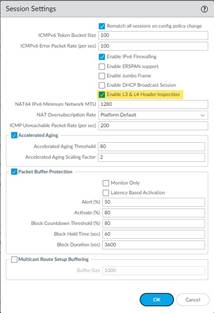
STEP 3 | Create a Zone Protection profile and configure your L3 & L4 header inspection settings.
1. Select Network > Network Profiles > Zone Protection and either select an existing profile or Add a new profile.
2. If you are creating a new zone protection profile, enter a Name for the profile and an optional Description .
3. Select L3 & L4 Header Inspection to define your custom vulnerability signatures.
4. Add new custom rules by defining the configuration and signature details for each entry, which are performed in their respective tabs: Configuration and Signature .
5. Under Configuration , fill out the following required fields in the General, Properties, and Reference section.
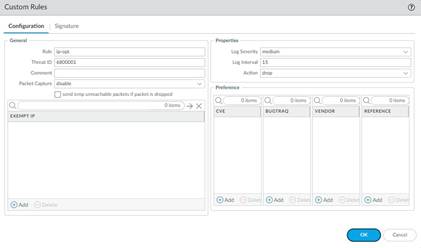
• Rule —Specify the custom rule name.
• Threat ID —Enter a numeric ID between 41000 and 45000 or 6800001 and 6900000.
• Comment —Optionally, add a description of the custom rule.
• Packet Capture —Select a packet capture setting.
![]() Optionally, select
send
icmp
unreachable packets if packet is dropped
to send
an ICMP unreachable response to the client upon packet loss.
Optionally, select
send
icmp
unreachable packets if packet is dropped
to send
an ICMP unreachable response to the client upon packet loss.
• Exempt IP —Enter the IP address(es) for which you do not want the custom rule to apply to.
• Log Severity —Select the severity of the threat.
• Log Interval —Indicates how frequently an event is logged.
• Action —Choose the action to take when there is a custom signatures match. Options include alert, drop, reset-client, reset-server, and reset-both. Refer to Security Policy Actions for more information about these action settings.
• Reference —Add references to provide context or related information about the custom threat signature. You can add CVEs, Bugtraq citations, 3rd party vendor IDs, or reference links to additional analysis or background information.
6. From the Signature tab, provide a name or description of the custom vulnerability under Comment . After specifying a name, select Add to provide the custom signature details.

• Specify a matching Or Condition. When finished, select Add to configure an And Condition and the associated values in a new window.
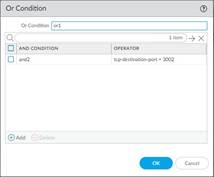
• If you select a Less Than or Greater Than operator, specify a Context and a Value . The Equal To operator additionally has Mask and Negate options. Click OK when you have finished configuring the new and condition.
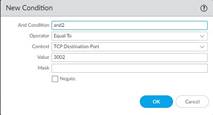
7. Repeat for each matching condition that you want to add.
8. Click OK and review your signatures. Click OK again to return to the zone protection profile.
9. From the L3 & L4 Header Inspection tab, you can reorder, disable, and clone the custom rule entries as necessary. Click OK to exit the zone protection profile.

STEP 4 | Apply the Zone Protection profile to a security zone that is assigned to interfaces you want to protect.
1. Select Network > Zones and select the zone where you want to assign the Zone Protection profile.
2. Add the Interfaces belonging to the zone.
3. For Zone Protection Profile , select the profile you just created.
4. Select Enable Net Inspection to enable the L3 & L4 header inspection configuration settings.
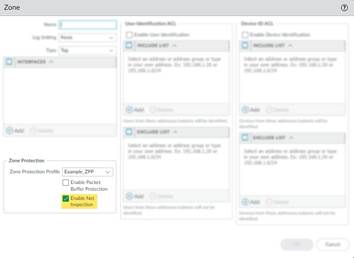
|
|
5. Click OK . |
|
STEP 5 | |
Commit your changes. |
|
STEP 6 | |
Test your custom signature . |
Test a Custom Signature
Custom signatures are particularly at risk for false positives and false negatives— the incorrect identification of traffic or failed detection of applications or threats. You should always test a custom signature after committing its configuration to verify that it functions as expected. Poorly written or outdated custom signatures may only be detected (and improved) through testing. If left unexamined, your signatures can reduce the efficacy of the firewall.
For custom App-ID signatures, generate traffic matching the application or application functions on a client system with a firewall between it and the application. Then, check the Traffic logs to verify that the generated sessions match the signatures you wrote. Your signature is incomplete if any traffic from your session does not match. Look at streams of sessions that do not match your signature with a packet capture tool like Wireshark. Identify unique patterns from those streams and add them to your signature to improve the accuracy of your signature.
For custom threat signatures, run penetration tests to detect system vulnerabilities. Then, view the Threat logs to see threat activity and the actions taken. Investigate any false positives or negatives. You may need to modify your signature, change its default action, or examine security profiles and policies.
Validate that traffic matches your signature as expected.
1. Run application traffic/penetration testing.
2. Navigate to Monitor > Logs > Traffic/Threat . Verify that you see traffic matching the custom application/threat (and that it is being handled per your policy rule).
For example, if you wrote an application signature for uploading on example.com, you would visit example.com and upload a file. In the Traffic logs, you would verify that the session updated from “web-browsing” to “uploading-example” after the file upload.
3. Fine-tune your signature by adding additional patterns or conditions to the signature, if necessary.
4. Repeat.
Custom Signature Pattern Requirements
The pattern requirements and available syntax for custom signatures depends on your firewall version. Firewalls running PAN-OS 10.0 (or a later version) have more flexible pattern requirements and a wider selection of regular expression (regex) syntax.
Refer to Syntax for Regular Expression Data Patterns for more details about the differences in syntax and pattern requirements between pre-PAN-OS 10.0 releases and PAN-OS 10.0 (and later) releases. You can switch between documentation releases by using the version switcher located in the left navigation bar.
If you encounter any errors using your custom signatures, verify that they conform to the following requirements.
|
Custom Signature Pattern Requirements |
All versions |
• |
You can enter hex-based patterns by surrounding the bytes with ‘ \ x ’. |
|
|
|
• |
Most signature patterns can contain a maximum of 127 characters. • If you need to use a pattern longer than 127 characters, create two separate conditions—one beginning where the other left off —and join them with ‘ AND ’. You can still use Ordered Condition Match to require the firewall to consider one condition before the other to ensure a closer match to the full string. • PA-220 and PA-800 appliances running PAN-OS 10.2 and later support a maximum pattern length of 64 characters for the following contexts: tcp -context-free and udp -context-free .
As noted above, you can also create a pattern that is longer that the maximum size of 64 |
|
|
|
|
characters by creating two separate conditions. |
|
|
|
• |
Some application decoders may be case-sensitive for a given field, depending on the decoder the firewall uses. For this reason, you should define variations of the pattern. For example, \.CNN\.com and \. cnn \.com will ensure your signature functions properly regardless of case. |
|
PAN-OS 9.1 and earlier versions |
• |
Every pattern you create must contain at least one 7-byte string with fixed values. • The 7 bytes cannot include a period ( . ), an asterisk ( * ), a plus sign ( + ), or [a-z] (ranges). • The 7-byte string can be anywhere in your pattern. |
|
|
|
|
• |
The curly braces (repetition operator) has some limitations. • Curly braces must be preceded by a ‘ .’ (period). • You must have 7 static bytes after the braces. |
|
|
|
• |
If you have two strings that are both less than 7 bytes and that are separated by a regular expression wildcard element, you must increase the size of at least one of the strings to 7 or more bytes. |
Testing Pattern Performance Impact
Firewalls running PAN-OS 10.0 or later have an enhanced pattern-matching engine that loosens pattern requirements and offers a richer selection of syntax. Used incorrectly, these features can have consequences that range from higher latency to dropped packets. To help you avoid performance degradation, the firewall enables you to check the performance impact of your signatures before you commit them.
The firewall scores the performance impact of a signature on a scale of 0 to 100%. A score of 0% means the signature severely affects firewall performance and a score of 100% means it minimally affects performance.
Use either of the following two commands to check the performance impact of a signature:
|
Command |
Description |
|
|
test custom-signature-type pattern <pattern> |
Calculates the performance impact of a signature without a context and determines whether the pattern is not valid, is valid but in only the new engine ( lscan ), or is valid in both the old and new engine ( pscan /AHO). Example:
|
|
|
test custom-signature-perf context <context> pattern <pattern> |
Calculates the performance impact of a signature with a context and displays a warning if the performance score is below 55%. Example: admin@VM-FW-75-252> test custom-signa ture -perf context http- rsp -headers pa ttern aaaa.*
Performance score: 42% This signature will have performance impact |
When you test a custom signature without a context , the score is a function of the literal parts of the pattern. The literal parts are the characters in the string with fixed values, such as “pan” and “net” in pan.{4}net . The greater the number and length of the literal parts, the higher the score of the pattern.
When you test a pattern with a context, the firewall performs the above calculation and adjusts it based on the typical length and frequency of the context. The firewall then divides the typical context length by the shortest literal part of the pattern and multiplies the base score of the pattern by this value. Finally, the firewall lowers the score if the context appears frequently and raises the score if the context appears infrequently.
Custom Signature Contexts
Custom signature contexts are available for both string and integer context types.
•
String Contexts
•
Integer Contexts
•
Context Qualifiers
String
Contexts
String Contexts are a type of custom signature context . They are used for Pattern Match operators.
• dhcp -req- chaddr
• dhcp -req- ciaddr
• dhcp-rsp-chaddr
• dhcp-rsp-ciaddr
• dns -req-addition-section
• dns -req-answer-section
• dns -req-authority-section
• dns -req-header
• dns -req-protocol-payload
• dns -req-section
• dns - rsp -addition-section
• dns - rsp -answer-section
• dns - rsp -authority-section
• dns - rsp -header
• dns - rsp -protocol-payload
• dns - rsp - ptr -answer-data
• dns - rsp -queries-section
• email-headers
• file-data
• file-elf-body
• file- flv -body
• file-html-body file-java-body file-mov-body file-office-content file-pdf-body file-riff-body file- swf -body file-tiff-body file-unknown-body ftp-req-params
• ftp-req-protocol-payload
• ftp- rsp -protocol-payload
• ftp- rsp -banner
• ftp- rsp -message
• gdbremote -req-context
• gdbremote - rsp -context
• giop -req-message-body
• giop - rsp -message-body
• h225-payload
• http-req-cookie
• http-req-headers
• http-req-host-header
• http-req-host-ipv4-address-found
• http-req-host-ipv6-address-found
• http-req-message-body
• http-req-mime-form-data
• http-req- ms -subdomain
• http-req-origin-headers
• http-req-params
• http-req- uri
• http-req- uri -path
• http-req-user-agent-header
• http- rsp -headers
• http-rsp-non-2xx-response-body
•
http-rsp-reason
•
icmp-req-code
•
icmp-req-data
icmp-req-type icmp-req-protocol-payload icmp-rsp-data icmp-rsp-protocol-payload
icmp-req-possible-custom-payload ike-req-headers ike-rsp-headers
ike-req-payload-text ike-rsp-payload-text
• imap -req- cmd -line
• imap -req-first-param
• imap -req-params-after-first-param
• imap -req-protocol-payload
• imap - rsp -protocol-payload
• irc -req-params
• irc -req-prefix
• jpeg-file-scan-data
• jpeg-file-segment-data
• jpeg-file-segment-header
• ldap -req- searchrequest - baseobject
• ldap-rsp-searchresentry-objectname
• ms -ds- smb -req-share-name
• ms-ds-smb-req-v1-create-filename
• ms-ds-smb-req-v2-create-filename
• msrpc -req-bind-data
• mssql - db -req-body
• netbios -dg-req-protocol-payload
• netbios -dg- rsp -protocol-payload
• netbios -ns-req-protocol-payload
• netbios -ns- rsp -protocol-payload
• nettcp -req-context
• oracle-req-data-text
• pe-dos-headers
• pe-file-header
• pe-optional-header
• pe-section-header pe-body-data pop3-req-protocol-payload pop3-rsp-protocol-payload pre-app-req-data
pre-app- rsp -data rtmp -req-message-body rtsp -req-headers rtsp -req- uri -path sip-req-headers
• snmp -req-community-text
• smtp-req-argument
• smtp-req-protocol-payload
• smtp- rsp -protocol-payload
• smtp- rsp -content
• ssh-req-banner
• ssh- rsp -banner
• ssl -req-certificate
• ssl -req- chello - sni
• ssl -req-client-hello
• ssl -req-protocol-payload
• ssl -req-random-bytes
• ssl - rsp -cert- subjectpublickey
• ssl - rsp -certificate
• ssl - rsp -protocol-payload
• ssl - rsp -server-hello
• tcp -context-free
• telnet-req-client-data
• telnet- rsp -server-data
• udp -context-free
• unknown-req- tcp -payload
• unknown- rsp - tcp -payload
• unknown-req- udp -payload
• unknown- rsp - udp -payload dhcp -req- chaddr
Identifies the DHCP request client hardware address.
Additional Details
None
Context Capture
This context provides the highlighted text.
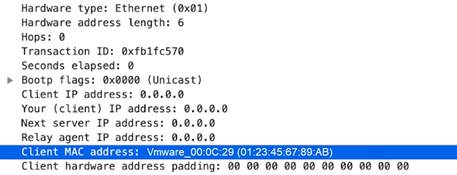
dhcp
-req-
ciaddr
Identifies the DHCP request client IP address.
Additional Details
None
Context Capture
This context provides the highlighted text.

dhcp-rsp-chaddr
Identifies the DHCP response client hardware address.
Additional Details
None
Context Capture
This context provides the highlighted text.

dhcp-rsp-ciaddr
Identifies the DHCP response client IP address.
Additional Details
None
Context Capture
This context provides the highlighted text.

dns
-req-addition-section
Additional records section if found in a DNS request (normal DNS requests should not have an additional records section).
Additional Details
None
Context Capture
This context provides the text highlighted in yellow.
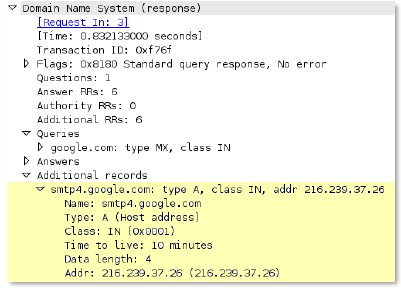
dns
-req-answer-section
Answer section if found in a DNS request (normal DNS requests should not have an answer section).
Additional Details
None
Context Capture
This context provides the text highlighted in yellow.
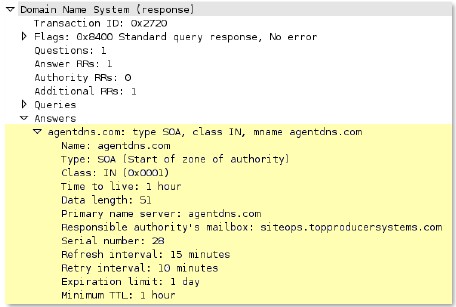
dns
-req-authority-section
Authority section if found in a DNS request (normal DNS requests should not have an authority section).
Additional Details
None
Context Capture
This context provides the text highlighted in yellow.
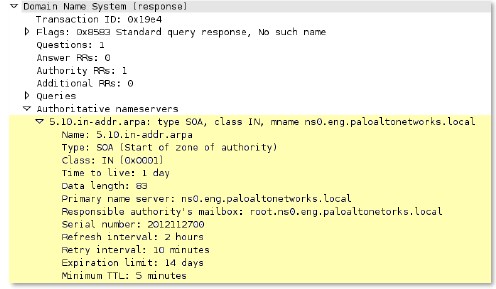
dns
-req-header
Full DNS request header (12 bytes) with the transaction ID, query flags, number of questions, and the Resource Record (RR) values in a DNS request.
Additional Details
None
Context Capture
This context provides the text highlighted in yellow.
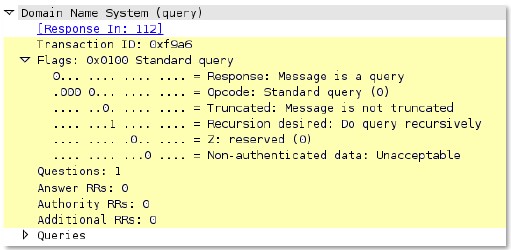
dns
-req-protocol-payload
The payload of a DNS request.
Context Capture

dns
-req-section
This context matches the DNS questions of a DNS query so that patterns can be written against one or more domains in a given DNS query.
Additional Details
This context is a direct pattern match against the format of a DNS query, so patterns must adhere to the DNS question structure. A recommended approach to create a DNS pattern is to capture the DNS request with Wireshark and copy the DNS Request field (make sure to remove the ending period in the request).
Context Capture
This example illustrates how to build a signature for a DNS query for the domain www.thebayareagamers.com.
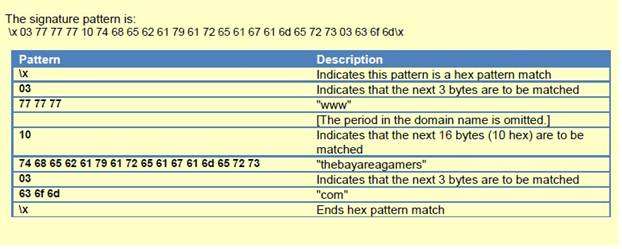
The Wireshark representation of the above table. Everything highlighted yellow and blue is provided by this context. The blue section is where the hexadecimal string is pulled from for the above table.
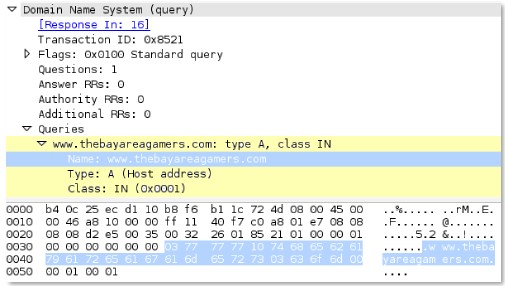
dns
-
rsp
-addition-section
Additional records section of a DNS response.
Additional Details
None
Context Capture
This context provides the text highlighted in yellow.
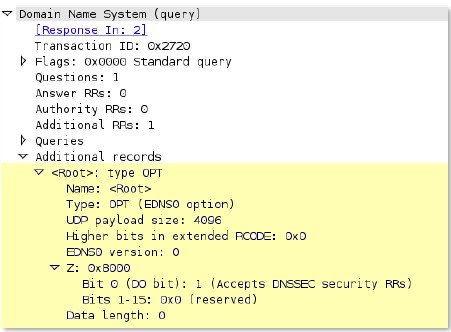
dns
-
rsp
-answer-section
All of the DNS Answers section with the exception of PTR records. PTR records are matched in a separate context.
Additional Details
None
Context Capture
This context provides the text highlighted in yellow.
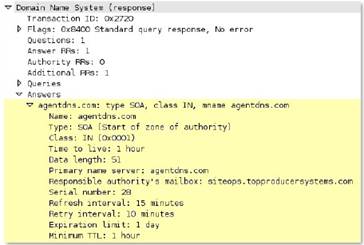
dns
-
rsp
-authority-section
The complete authority section of a DNS response.
Additional Details
None
Context Capture
This context provides the text highlighted in yellow.
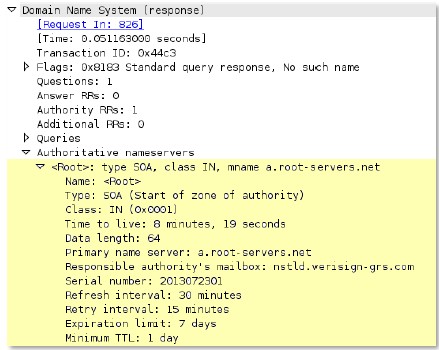
dns
-
rsp
-header
Full DNS response header, which includes the transaction ID, query flags, the number of questions, and the Resource Record (RR) values.
Additional Details
None
Context Capture
This context provides the text highlighted in yellow.
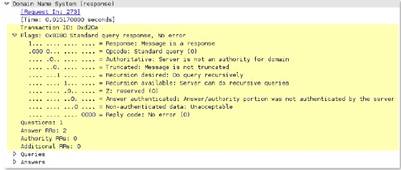
dns
-
rsp
-protocol-payload
*This is the description*
Additional Details
None
Context Capture
This context provides the text highlighted in yellow.

dns
-
rsp
-
ptr
-answer-data
FQDN for a type PTR DNS response.
Additional Details
None
Context Capture
This context provides the text highlighted in yellow.
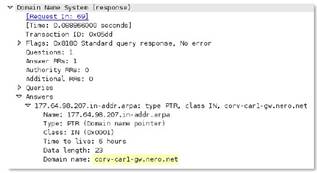
dns
-
rsp
-queries-section
Name, type, and class of the queries section in a DNS response.
Additional Details
None
Context Capture
This context provides the text highlighted in yellow.
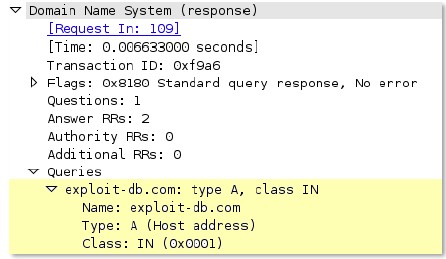
email-headers
All email headers and the plain text email body. Attachments are not included in this context as they are provided elsewhere.
Additional Details
None
Context Capture
This context provides the text in bold.
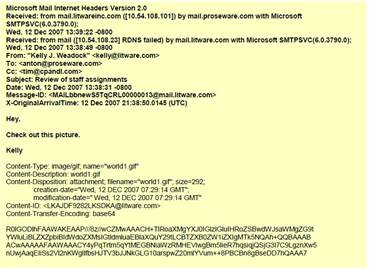
file-data
Covers the data of transferred files.
Additional Details
This context supports the following file types:
7z
ABR ACE
ANI
ARJ header
• ASF
• BAT
• BMP
• CAB
• CAFF
• CHM
• Cineon
• CorelDRAW
• CRX
• CSV
• DER
• DEX
• DMG
• DOC
• DWF
• DWG
• EICAR
• ELF
• Email headers
• EMF
• EPS
• FFmpeg
• FLAC
• FLV
• Font
• GDS
• GIF
• GZip
• HDF
• HLP
• ICO
IFF
IVR
JarPack
Java
JPEG
• JS
• PL
• HTA
• LNK
• LZH
• M3U
• Mach
• MAKI
• MDB
• MDI
• MFT
• MIDI
• MOV
• MP2T
• MP3
• MPEG
• MVG
• MSOFFICE
• OGG
• OOXML
• Pcap
• PE
• PGP
• PICT
• PKG
• PLS
• PNG
• Powershell
• PSD
• QVF
RA
RAR
RIFF
RLA
RTF
• RWS
• SAMI
• SGI
• SH
• Shockwavelte ⇐
• Shockwavebte ⇐
• Softimage ⇐ PIC
• Soundbank
• SVG
• SWC
• SWF
• SWZ
• TIFF
• TNEF
• VBS
• WebM
• WebP
• WMF
• WOFF
• WPC
• WRI
• ZIP
Context Capture
This context captures the following information for a given file type (here GIF87a).

file-elf-body
Identifies an executable and linkable formatted (ELF) file type contained in a protocol or application response and checks the ELF file body.
Additional Details
None
Context Capture

file-
flv
-body
Full body of a flash video file minus the first 9 bytes, which are reserved for the header.
Additional Details
Here is a screenshot from Wikipedia detailing the 9-byte header:

Context Capture
Using a cli hex-editor named xxd , we can view the header of the flash file.

Every byte after the 9th is provided by this context. Only the first 50 bytes were printed here as an example.

file-html-body
Full body of a HTML file, minus the first 8 bytes as they’re reserved for the header.
Additional Details
None
Context Capture
xxd is a cli-based hex editor; every byte after the 8th byte is provided by this context. Only the first 50 bytes were printed here as an example.

file-java-body
Full body of a Java file, minus the first 4 bytes, which is always 0xCAFEBABE (“ cafebabe ”).
Additional Details
None
Context Capture
The first 4 bytes of the Java file printed by the cli-based hex editor, xxd . Every byte after the 4th is provided by this context. Only the first 25 bytes were printed in the above example.

file-mov-body
Full body of a MOV file, minus the first 8 bytes as they’re reserved for the header.
Additional Details
None
xxd is a cli-based hex editor; every byte after the 8th is provided by this context. Only the first 50 bytes were printed in this example.

file-office-content
Full body of a Microsoft Office Document file, minus the first 8 bytes as they’re reserved for the header.
Additional Details
None
Context Capture
xxd is a cli-based hex editor, every byte after the 8th is provided by this context. Only the first 50 bytes were printed in this example.

file-pdf-body
The full body of a PDF file minus the first 8 bytes, which are reserved for the header.
Additional Details
Compressed data is provided as decompressed data by the decoder.
Context Capture
xxd is a cli-based hex editor, every byte after the 8th is provided by this context. Only the first 50 bytes were printed in this example.

file-riff-body
Full body of a RIFF file, minus the first 8 bytes as they’re reserved for the header.
Additional Details
None
Context Capture
xxd is a cli-based hex editor; every byte after the 8th is provided by this context. Only the first 50 bytes were printed in this example.

file-
swf
-body
Full body of a SWF file, minus the first 8 bytes as they’re reserved for the header.
Additional Details
None
Context Capture
xxd is a cli-based hex editor; every byte after the 8th is provided by this context. Only the first 50 bytes were printed in this example.

file
-tiff-body
When the firewall detects a tagged image file format (TIFF) file, this context returns data contained within the body of the file.
Additional Details
None
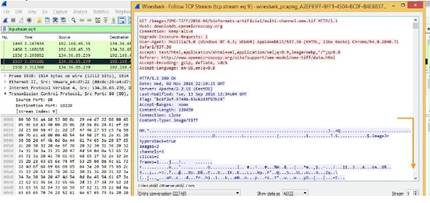
file-unknown-body
This context provides data after the first 8 bytes and up to 7 packets of an unknown file we couldn’t otherwise identify.
Additional Details
None
Context Capture
xxd is a cli-based hex editor; every byte after the 8th is provided up until 7 bytes is seen. In this example the first 8 bytes are numbered to easily show what wouldn’t be matched. Next are “A’s” followed by “shellcode” in hex. You could block this file by adding ‘\x7368656c6c636f6465\x’ in the “Pattern” field of the custom signature.

ftp-req-params
Parameters following an FTP command.
Additional Details
None
Context Capture
The context provides the text highlighted in yellow. Qualifiers: This context can use FTP command and FTP vendor ID qualifiers to limit signatures to specific FTP commands and known FTP clients.
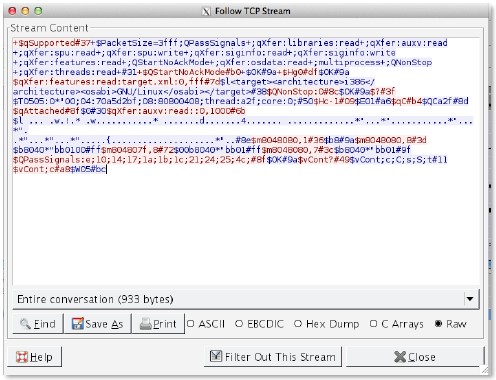
ftp-req-protocol-payload
The payload of an FTP request.
Context Capture
![]()
ftp-
rsp
-protocol-payload
The payload of an FTP response.
Context Capture

ftp-
rsp
-banner
FTP welcome banner shown before authentication.
Additional Details
None

ftp-
rsp
-message
FTP server response code and the code itself. Note, that the code and the space can be used as part of the required 7-byte anchor.
Additional Details
None
Context Capture
This context matches the text highlighted in yellow.

gdbremote
-req-context
GDB is a process debugger that has the ability to debug across the network. This context provides the request data.
Additional Details
None
Context Capture
After capturing the GDB network data, follow the TCP stream to view the data. In this instance, everything in red is the request data, and that is what this context provides.

gdbremote
-
rsp
-context
GDB is a process debugger that has the ability to debug across the network. This context provides the response data.
Additional Details
None
Context Capture
After capturing the GDB network data, I followed the TCP stream to view the data. In this instance, everything in blue is what this context provides
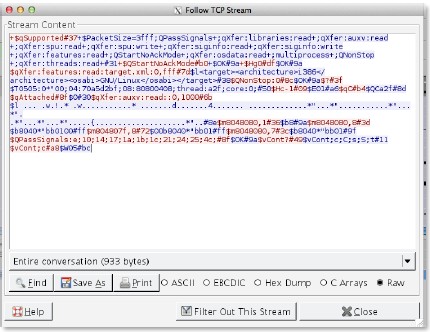
giop
-req-message-body
Everything in the GIOP request.
Additional Details
None
Context Capture
This context provides the text highlighted in yellow.
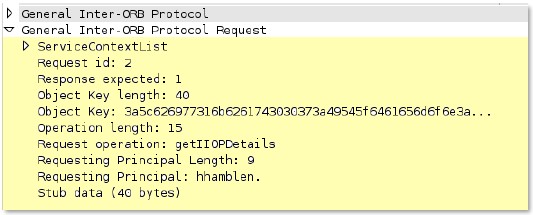
giop
-
rsp
-message-body
Data after the GIOP header in a GIOP response.
Additional Details
None
Context Capture
This context provides the text highlighted in yellow.
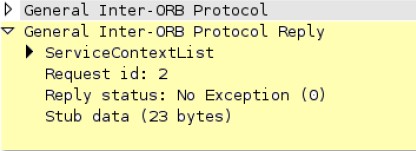
h225-payload
Extracts any data contained in an H.225.0 (App-ID: h.225) request.
Additional Details
None
Context Capture
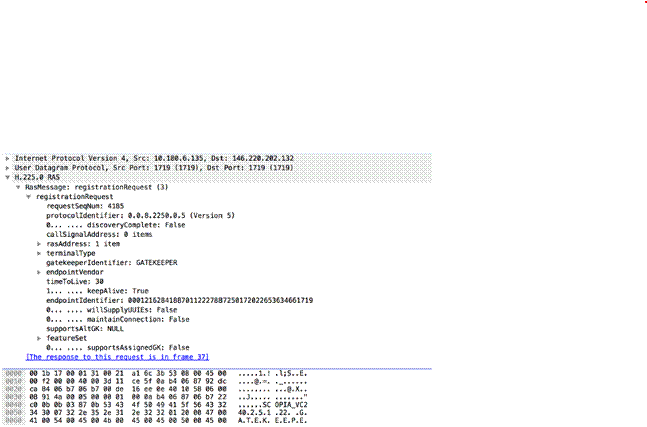
http-req-cookie
Returns the Cookie header value contained in an HTTP request header.
Additional Details
None
Context Capture
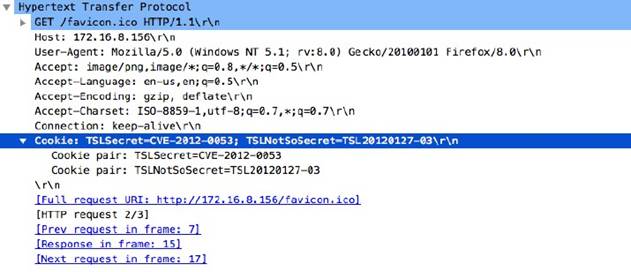
http-req-headers
HTTP request header, not including the method, path, HTTP version, or host as those are provided elsewhere.
Additional Details
None
Context Capture
This context provides the text highlighted in yellow. This context can use HTTP header field and HTTP method qualifiers to limit signatures to HTTP headers with specific values for select header fields and for specific HTTP methods.

http-req-host-header
Host field in a HTTP request header.
Additional Details
The pattern match searches for a pattern only within the highlighted field. By default it does not apply line start and line end anchors; as a result, the pattern ‘example.com’ will match with < anytext >example.com< anytext >. To initiate an exact match search, you must add a <space> before the pattern and ‘\r\n’ after the pattern on PAN-OS 9.1 and earlier. Starting with PAN-OS 10.0 you can use the following anchor characters: ^ and $ to specify a string start and end.
Context Capture
This context provides the text highlighted in yellow. This context can use HTTP header field and HTTP method qualifiers to limit signatures to HTTP headers with specific values for select header fields and for specific HTTP methods.

http-req-host-ipv4-address-found
When an HTTP request host header contains an IPv4 address, the value is set to 1.
Additional Details
None
Context Capture
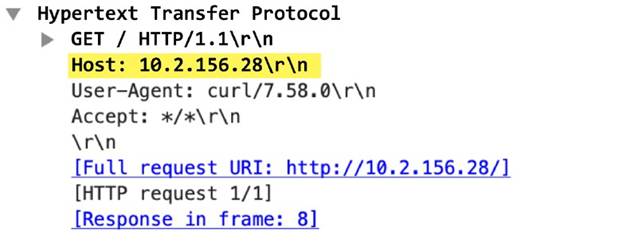
http-req-host-ipv6-address-found
When an HTTP request host header contains an IPv6 address, the value is set to 1.
Additional Details
None
Context Capture
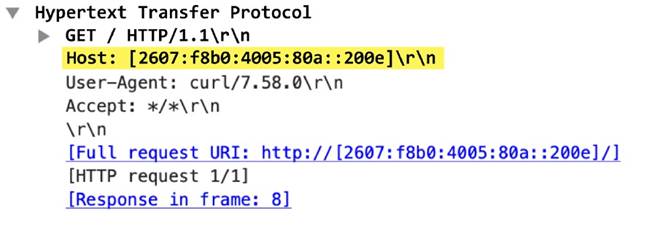
http-req-message-body
Body content of an HTTP request when the body content cannot be recognized as URL encoded or MIME type data using the Content-type field. For signatures concerning URLs, reference httpreq -params ; and for MIME type data, reference http-req-mime-form-data .
Additional Details
None
Context Capture
This context provides the full body. I followed the TCP stream in Wireshark and only chose a portion of the body for the signature to match. Qualifiers: This context can use the HTTP method qualifier to limit signatures to HTTP headers with specific HTTP methods.

http-req-mime-form-data
MIME header data in the body of an HTTP request, not including embedded file contents.
Additional Details
None
Context Capture
This context provides the data highlighted in yellow.
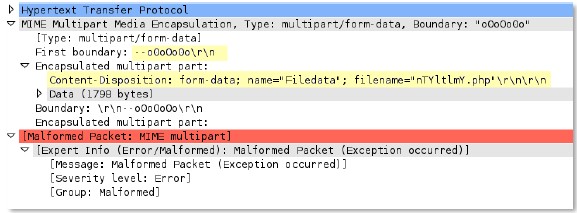
http-req-
ms
-subdomain
Identifies the request headers/params which can be used to identify office365-enterprise-access. The example below (X-User-Identity) is one of several headers that can be used to identify the office365-enterprise account.
Additional Details
None
Context Capture
This context provides the highlighted text.

http-req-origin-headers
Identifies strings used to match against strings from the origin field. You must operate PAN-OS 8.1 or later to use this field.
Additional Details
None
Context Capture
This context provides the highlighted text.

http-req-params
Query string as well as parameters in the HTTP body for a POST method (after the ‘? ’) .
Additional Details
None
Context Capture
This context provides the text highlighted in yellow. Qualifiers: This context can use the HTTP method qualifier to limit signatures to HTTP headers with specific HTTP methods.

http-req-
uri
The URI path and parameters in a HTTP header request.
Additional Details
Available only in PAN-OS 10.0 and later releases.
Context Capture
This context provides the text highlighted in yellow. Qualifiers: This context can use the HTTP method qualifier to limit signatures to HTTP headers with specific HTTP methods.

http-req-
uri
-path
Path in a HTTP request header (up to and including the ‘?’).
Additional Details
None
Context Capture
This context provides the text highlighted in yellow.
Qualifiers: This context can use the HTTP method qualifier to limit signatures to HTTP headers with specific HTTP methods.

http-req-user-agent-header
The user agent field in an HTTP request header.
Context Capture
This context covers the area called out in red.
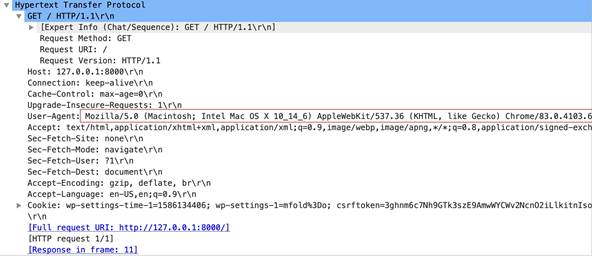
http-
rsp
-headers
Full HTTP response header, not including the HTTP banner.
Additional Details
None
Context Capture
This context provides the text highlighted in yellow.
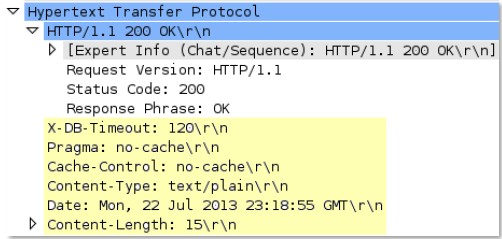
http-rsp-non-2xx-response-body
Body of non-2xx HTTP response, excluding HTTP 406 (Not Acceptable) responses.
Additional Details
None
Context Capture
This context provides the text highlighted in yellow.
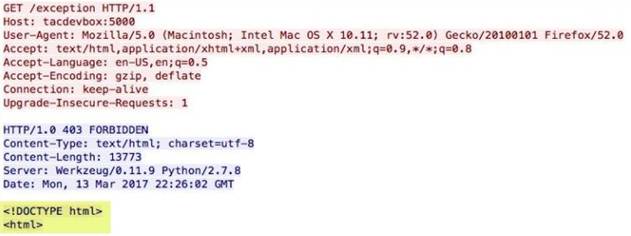
http-
rsp
-reason
The HTTP response status reason.
Context Capture

icmp
-req-code
Identifies the ICMP request message code number.
Additional Details
None
Context Capture
This context provides the highlighted text.

icmp
-req-data
Identifies the ICMP payload request message.
Additional Details
None
Context Capture
This context provides the highlighted text.
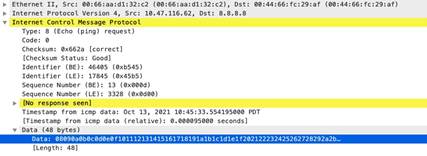
icmp
-req-type
Identifies the ICMP request message type number.
Additional Details
None
Context Capture
This context provides the highlighted text.

icmp
-req-protocol-payload
The payload of an ICMP request.
Context Capture

icmp
-
rsp
-data
Identifies the ICMP payload response message.
Additional Details
None
Context Capture
This context provides the highlighted text.
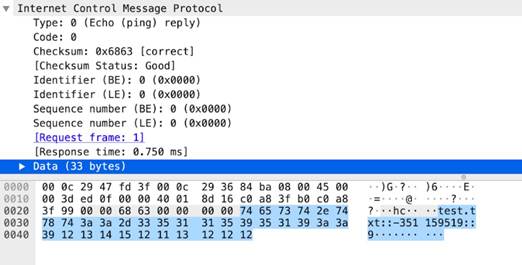
icmp
-
rsp
-protocol-payload
The payload of an ICMP response.
Context Capture
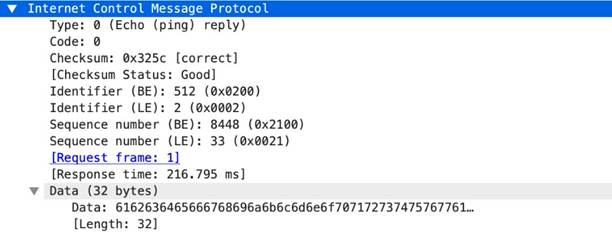
icmp
-req-possible-custom-payload
This is not a context but a value that you can add to your custom signature to detect custom payloads in ICMP requests.
Context Capture
None
ike
-req-headers
Full IKE header from the requester, including the initiator’s SPI, next payload, major version, minor version, exchange type, flags, message ID, and length.
Additional Details
None
Context Capture
This context provides the text highlighted in yellow.
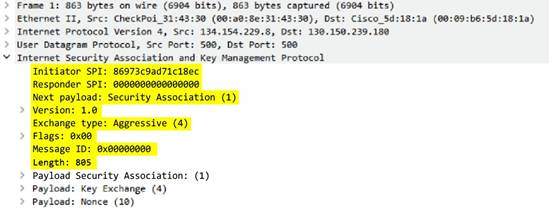
ike
-
rsp
-headers
Full IKE header from the responder, including the responder’s SPI, next payload, major version, minor version, exchange type, flags, message ID, and length.
Additional Details
None
Context Capture
This context provides the text highlighted in yellow.
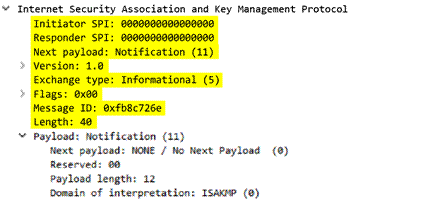
ike
-req-payload-text
Full security association request payload, including the proposal and transform substructures.
Additional Details
None
Context Capture
This context provides the text highlighted in yellow.
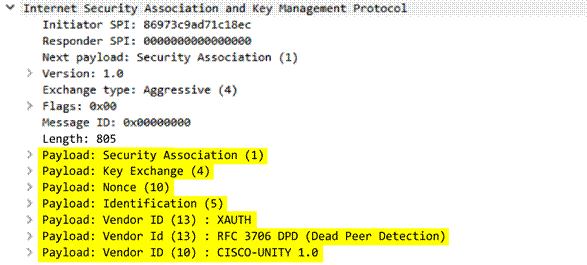
ike
-
rsp
-payload-text
Full security association response payload, including the proposal and transform substructures.
Additional Details
None
Context Capture
This context provides the text highlighted in yellow.
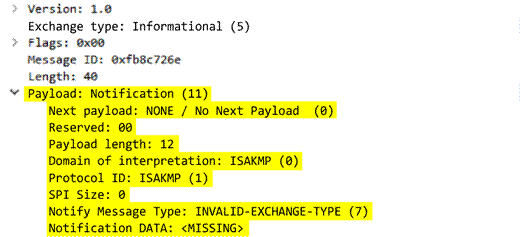
imap
-req-
cmd
-line
IMAP command used.
Additional Details
None
Context Capture
This context provides the text highlighted in yellow.

imap
-req-first-param
First parameter to an IMAP command.
Additional Details
None
Context Capture
This context provides the text highlighted in yellow. This context can use the IMAP command qualifier to limit signatures to specific IMAP commands.

imap
-req-params-after-first-param
Every parameter to an IMAP command, not including the first parameter.
Additional Details
None
Context Capture
This context provides the text highlighted in yellow.

imap
-req-protocol-payload
The payload of an IMAP request.
Context Capture
![]()
imap
-
rsp
-protocol-payload
The payload of an IMAP response.
Context Capture
![]()
irc
-req-params
Argument after the actual IRC command and space.
Additional Details
None
Context Capture
This context provides the text highlighted in yellow.

irc
-req-prefix
Data before an IRC command, typically used to indicate the true origin of a message.
Additional Details
None
Context Capture
You can see by following the TCP stream in Wireshark that there is data in between the IRC commands. It appears this message was Proxied.
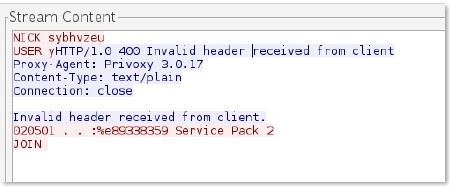
jpeg-file-scan-data
This context provides all of the scan data within a JPEG file.
Additional Details
None
jpeg-file-segment-data
This context provides all of the segment data within a JPEG file.
Additional Details
None
jpeg-file-segment-header
This context provides the segment header data within a JPEG file.
Additional Details
None
ldap
-req-
searchrequest
-
baseobject
Identifies the base object for the LDAP searchRequest entry.
Additional Details
None
Context Capture
This context provides the highlighted text.

ldap-rsp-searchresentry-objectname
Identifies the objectName for the LDAP searchResEntry .
Additional Details
None
Context Capture
This context provides the highlighted text.

ms
-ds-
smb
-req-share-name
Full path to a file that is read or written using SMB.
Additional Details
None
Context Capture
This context provides the text highlighted in yellow.
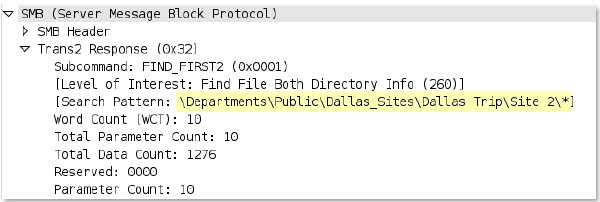
ms-ds-smb-req-v1-create-filename
This field identifies the SMBv1 NT Create AndX filename.
Additional Details
None
Context Capture
This context provides the text highlighted in yellow.
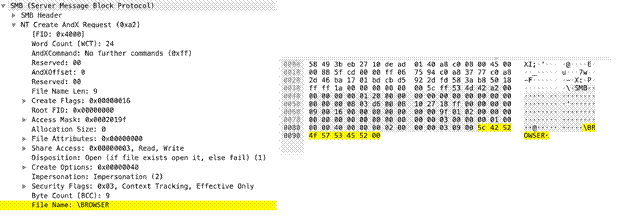
ms-ds-smb-req-v2-create-filename
This field identifies the SMBv2/SMBv3 Create filename.
Additional Details
None
Context Capture
This context provides the text highlighted in yellow.

msrpc
-req-bind-data
Data payload of a MS RPC Bind request.
Additional Details
None
Context Capture
This context provides the text highlighted in yellow. The easiest way to find a pattern to match is to look at the hex representation of the payload and pick at least 7 bytes to match on as seen above.
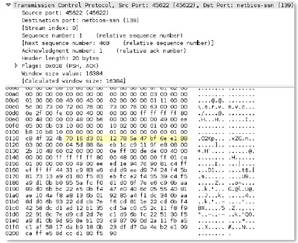
mssql
-
db
-req-body
Request to a Microsoft SQL server, excluding the request header.
Additional Details
None
Context Capture
This context provides the text highlighted in yellow.

netbios
-dg-req-protocol-payload
The payload of a NetBIOS Datagram Service request.
Context Capture

netbios
-dg-
rsp
-protocol-payload
The payload of a NetBIOS Datagram Service response.
Context Capture

netbios
-ns-req-protocol-payload
The payload of a NetBIOS Name Service request.
Context Capture
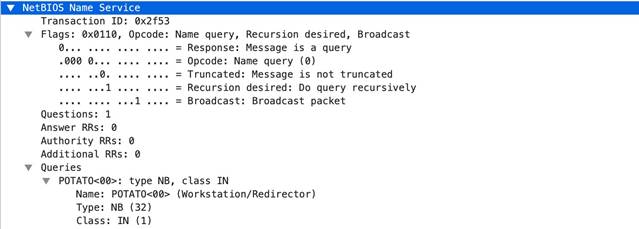
netbios
-ns-
rsp
-protocol-payload
The payload of a NetBIOS Name Service response.
|
|
Context Capture
nettcp
-req-context
Checks the RequestContext field in Net.TCP (App-ID: net.tcp ) requests.
Additional Details
None
oracle-req-data-text
When the firewall detects an Oracle request and the request type is DATA, this context returns the data contained in the request.
Additional Details
None
Context Capture

pe-dos-headers
The DOS MZ header and the DOS stub are located in the first 64 bytes of the PE file.
Additional Details
None
Context Capture
This context provides the data in bold.
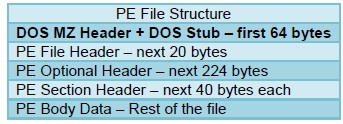
pe
-file-header
The PE file header is 20 bytes long and starts at the 65th byte of the PE file.
Additional Details
None
Context Capture
This context provides the data in bold.
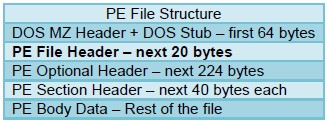
pe
-optional-header
The optional header of a PE file is typically 224 bytes long and starts at the 86th byte of the PE file.
Additional Details
None
Context Capture
This context provides the data in bold.
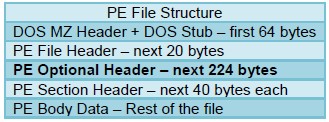
pe-section-header
This context provides the section headers for a PE file.
Additional Details
These headers are 40 bytes each. Some typical sections with headers are “ idata ”, “ rsrc ”, “data”, “text”, and “ src ”. However, each PE file may not include each section and the sections are not guaranteed to be in any specific order.
Context Capture
This context provides the data in bold.
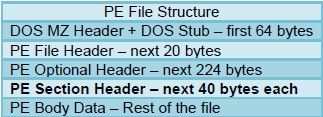
pe-body-data
This context provides the body data of a PE file, which includes everything inside the file sections themselves.
Additional Details
None
Context Capture
This context provides the data in bold.
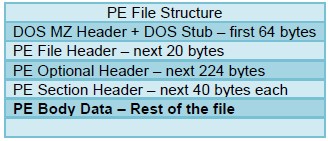
pop3-req-protocol-payload
The payload of a POP3 request.
Context Capture
![]()
pop3-rsp-protocol-payload
The payload of a POP3 response.
Context Capture

pre-app-req-data
This field provides the request data before the firewall App-ID has identified the traffic.
Additional Details
Firewall traffic that cannot be identified by App-ID due to inadequate data for signature matching is designated as insufficient data in the application field of the traffic logs.
Context Capture
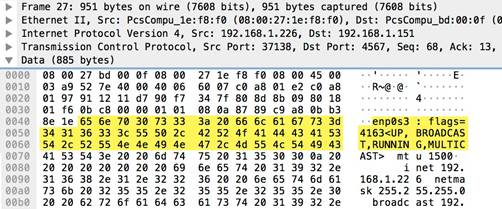
pre-app-
rsp
-data
This field provides the response data before the firewall App-ID has identified the traffic.
Additional Details
Firewall traffic that cannot be identified by App-ID due to inadequate data for signature matching is designated as insufficient data in the application field of the traffic logs.
Context Capture
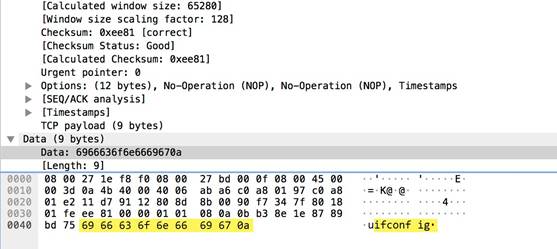
rtmp
-req-message-body
RTMP body up until twenty packets have been sent.
Additional Details
None
Context Capture
This context provides the text highlighted in yellow.
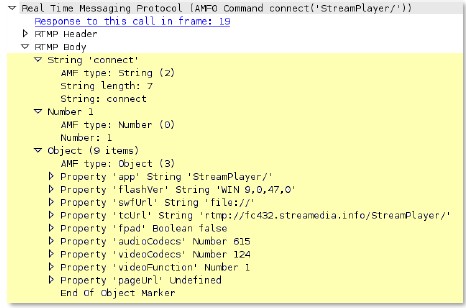
rtsp
-req-headers
Full RTSP request headers, not including the command line.
Additional Details
None
Context Capture
This context provides the text highlighted in yellow. Qualifier: This context can use the RTSP method qualifier to limit signatures to specific RTSP methods.
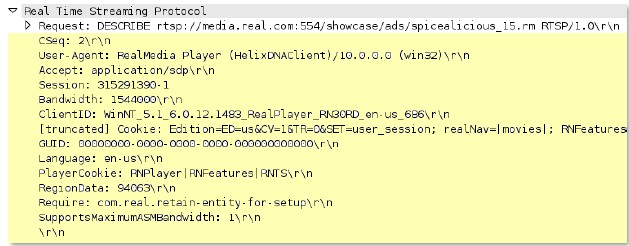
rtsp
-req-
uri
-path
Path of an RTSP request, not including the command line.
Additional Details
None
Context Capture
This context provides the text highlighted in yellow. Qualifier: This context can use the RTSP method qualifier to limit signatures to specific RTSP methods.

sip-req-headers
This field identifies the message header for a sip request.
Additional Details
None
Context Capture
This context provides the text highlighted content.

snmp
-req-community-text
This context tracks the value of the variable field, “community” in the SNMP request header.
Additional Details
None
Context Capture
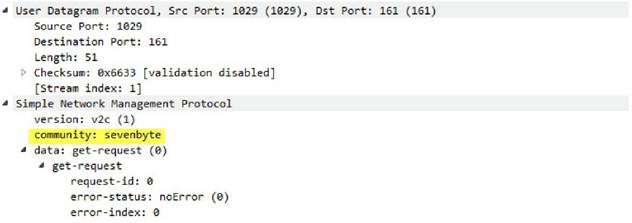
smtp-req-argument
Argument of a SMTP command.
Additional Details
None
Context Capture
This context provides the text highlighted in yellow. This context can use the SMTP method qualifier to limit signatures to specific SMTP methods.

smtp-
rsp
-content
SMTP server response content.
Additional Details
None
Context Capture
This context provides the text highlighted in yellow.

smtp-req-protocol-payload
The payload of an SMTP request.
Context Capture

smtp-
rsp
-protocol-payload
The payload of an SMTP response.
Context Capture

ssh-req-banner
SSH banner of the client, not including comments.
Additional Details
None
Context Capture
This context provides the text highlighted in yellow.

ssh-
rsp
-banner
SSH banner of the server, not including comments.
Additional Details
None
Context Capture
This context provides the text highlighted in yellow.

ssl
-req-certificate
Certificate request message of a SSL negotiation when initiated from the client.
Additional Details
None
Context Capture
This context provides the text highlighted in yellow.
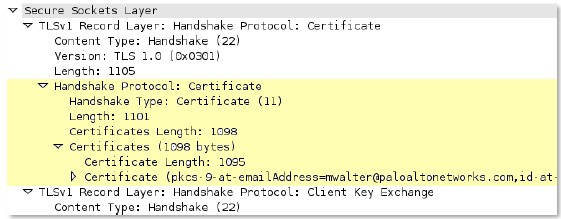
ssl
-req-
chello
-
sni
Detects and identifies the SNI (Server Name Indication) contained within the client hello message of an SSL negotiation.
Additional Details
None
Context Capture
This context provides the highlighted text.
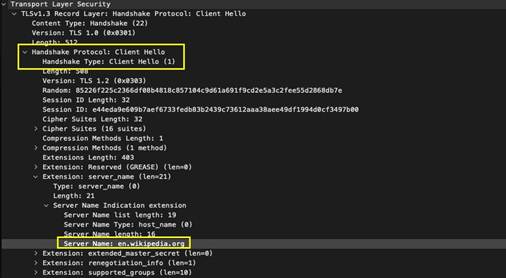
ssl
-req-client-hello
Client hello message of a SSL negotiation.
Additional Details
None
Context Capture
This context provides the text highlighted in yellow.
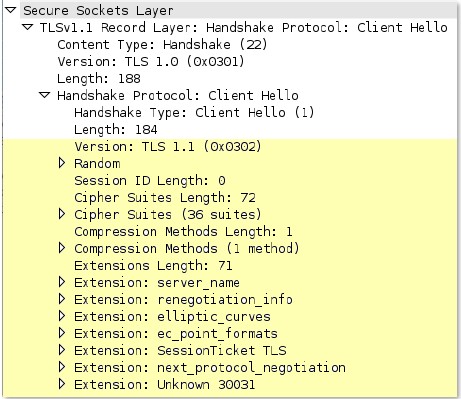
ssl
-req-protocol-payload
The payload of an SSL request.
Context Capture

ssl
-req-random-bytes
Random bytes field in the SSL client hello.
Additional Details
None
Context Capture
This value is already hexadecimal; you’ll need to write the pattern in your signature as such (enclosed in \x).
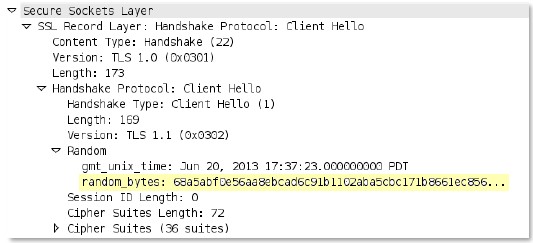
ssl
-
rsp
-cert-
subjectpublickey
Certificate subject public key that’s part of an SSL server hello handshake.
Additional Details
None
Context Capture
This context matches the text highlighted in yellow.
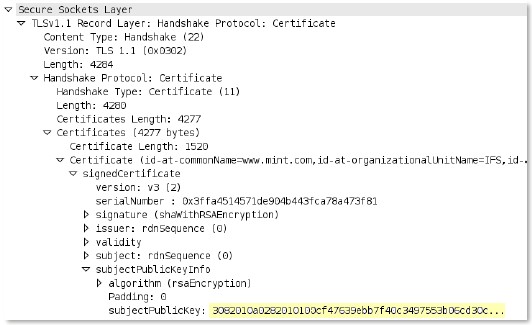
ssl
-
rsp
-certificate
Certificate response message of a SSL negotiation from the server.
Additional Details
None
Context Capture
This context matches the text highlighted in yellow.
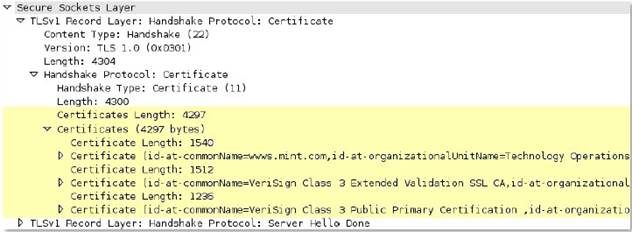
ssl
-
rsp
-protocol-payload
The payload of an SSL response.
Context Capture
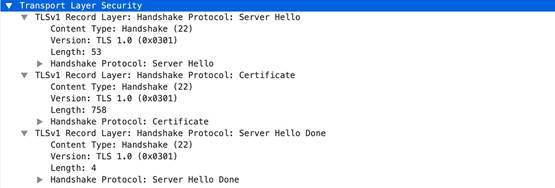
ssl
-
rsp
-server-hello
Server hello message of a SSL negotiation.
Additional Details
None
Context Capture
This context provides the text highlighted in yellow.
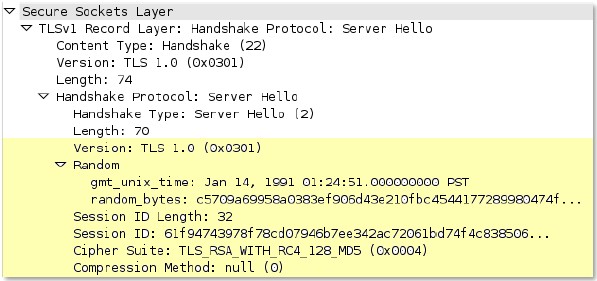
tcp
-context-free
The entire payload of a TCP packet.
Additional Details
Available only on PAN-OS 10.0 or later.
![]() • Using this context is not recommended and
results in severe performance degradation.
• Using this context is not recommended and
results in severe performance degradation.
• Upon upgrade to PAN-OS 10.2 and later, PA-220 and PA-800 appliances support a maximum pattern length of 64 characters.
Context Capture
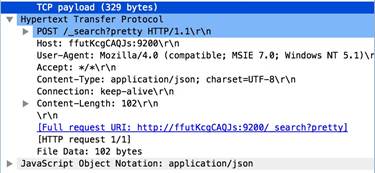
telnet-req-client-data
All telnet data for traffic originating from the client.
Additional Details
None
Context Capture
This context matches the text highlighted in yellow.

telnet-
rsp
-server-data
All telnet data for traffic originating from the server.
Additional Details
None
Context Capture
This context matches the text highlighted in yellow.

udp
-context-free
The entire payload of a UDP packet.
Additional Details
Available only on PAN-OS 10.0 or later.
![]() • Using this context is not recommended and
results in severe performance degradation.
• Using this context is not recommended and
results in severe performance degradation.
• Upon upgrade to PAN-OS 10.2 and later, PA-220 and PA-800 appliances support a maximum pattern length of 64 characters.
Context Capture

unknown-req-
tcp
-payload
Full TCP payload for unknown TCP traffic originating from the client.
Additional Details
None
Context Capture
This context matches the text highlighted in yellow.

unknown-
rsp
-
tcp
-payload
Full TCP payload for unknown TCP traffic originating from the server.
Additional Details
None
Context Capture
This context matches the text highlighted in yellow.

unknown-req-
udp
-payload
Full UDP payload for unknown UDP traffic originating from the “client”, which is the initiator of UDP communications.
Additional Details
None
Context Capture
This context matches the text highlighted in yellow.

unknown-
rsp
-
udp
-payload
Full UDP payload for unknown UDP traffic originating from the “server”, which is opposite the “client”.
Additional Details
None
Context Capture
This context matches the text highlighted in yellow.

Integer
Contexts
Integer Contexts are a type of custom signature context . They are used for equality operators: less than, greater than, and equal to. They are available for custom IPS signatures, but not custom application signatures.
• dnp3-req-func-code
• dnp3-req-object-type
• dns - rsp - tcp -over- dns
• dns - rsp -txt-found
• ftp-req-params- len
• http-req-connect-method
• http-req-content-length
• http-req-cookie-length
• http-req-header-length
• http-req-host-ipv4-address-found
• http-req-host-ipv6-address-found
• http-req- dst -port
• http-req-param-length
• http-req-no-host-header
• http-req-no-version-string-small-pkt
• http-req-simple-request
• http-req- uri -path-length
• http-req- uri -tilde-count-num
• http- rsp -code
• http- rsp -content-length
•
http-rsp-total-headers-len
•
iccp-req-func-code
• ike -req-payload-type
• ike - rsp -payload-type
• ike -req-payload-length
• ike - rsp -payload-length
• ike -version
• imap -req- cmd -param- len
• imap -req-first-param- len
• imap -req-param- len -from-second
• irc -req-protocol-payload
• irc - rsp -protocol-payload
• ntlm-req-auth-v1
• ntlm-req-auth-v2
• open- vpn -req-protocol-payload
• pfcp -req-msg-type
• pfcp - rsp -msg-type
• smtp-req- helo -argument-length
• smtp-req-mail-argument-length
• smtp-req- rcpt -argument-length
• sctp -req- ppid
• ssl -req-client-hello- ext -type
• ssl -req-client-hello-missing- sni
•
ssl-rsp-version
•
stun-req-attr-type
•
panav-rsp-zip-compression-ratio
dnp3-req-func-code
DNP3 Application Layer request and response headers contain function codes. The function codes include read, write, select, operate, and direct_operate . The dnp3-req-func-code context identifies these function codes which are 1 byte in length.
Additional Details
None
Context Capture
In this example, the function code ‘Select’ has hex value 0x03. In the custom application, a decimal equivalent of 3 will have to be defined.
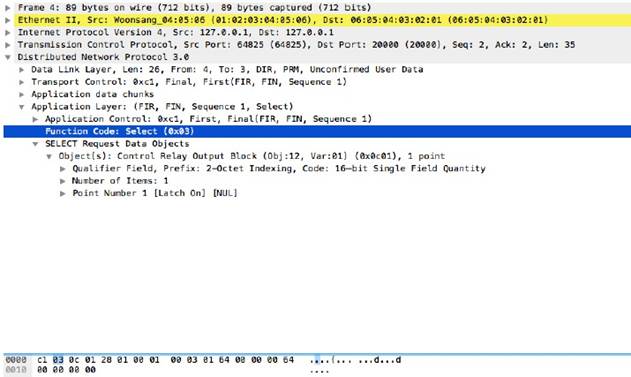
dnp3-req-object-type
This context can be used to identify group and variation objects in the DNP3 library.
Additional Details
The dnp3-req-object-type context is a 2-byte hex value.
Context Capture
In this case, the hex is 0x0c01 and the custom application will take a decimal value of 3073.
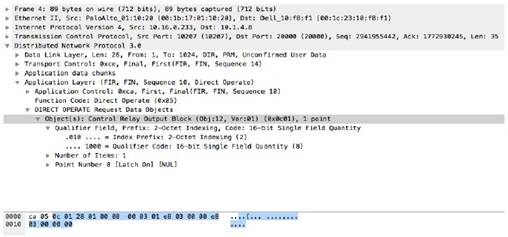
dns
-
rsp
-
tcp
-over-
dns
Checks multiple conditions of a DNS response to detect TCP-over-DNS.
Additional Details
If conditions indicating TCP-over-DNS are detected, the dns - rsp - tcp -over- dns field is set to 1.
Context Capture
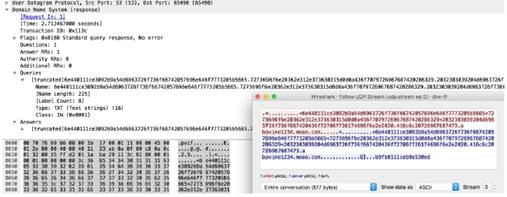
dns
-
rsp
-txt-found
Checks the Answer section of a DNS response, and checks if the Type field is set to TXT.
Additional Details
None
Context Capture
In this case, set the dns - rsp -text-found to 1 if TXT has to be identified as the DNS Type field.
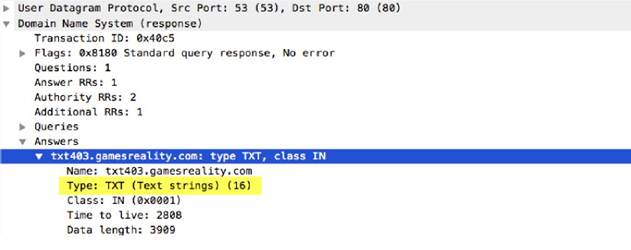
ftp-req-params-
len
Length of the arguments to an FTP command, not including the command itself.
Additional Details
None
Context Capture
This context provides the length of the text highlighted.This context can use FTP command and FTP vendor ID qualifiers to limit signatures to specific FTP commands and known FTP clients.

http-req-connect-method
Identifies the connect method used for the http-request. If the connect method is used, then the value of this context is set to 1.
Additional Details
None
Context Capture
This context provides the highlighted text.

http-req-content-length
Content length of a HTTP request.
Additional Details
None
Context Capture
This context provides the integer highlighted in yellow.

http-req-cookie-length
Identifies the Cookie header in an HTTP request header, and detects the number of bytes in the cookie string.
Additional Details
None
Context Capture

http-req-
dst
-port
Identifies and detects the destination port for an HTTP request.
Additional Details
None
Context Capture
This context provides the highlighted text.

http-req-header-length
Length of a HTTP request header, excluding method, path, and HTTP version.
Additional Details
None
Context Capture
Qualifiers: This context can use HTTP header field and HTTP method qualifiers to limit signatures to HTTP headers with specific values for select header fields and for specific HTTP methods.

http-req-param-length
Length of the URL query string.
Additional Details
None
Context Capture
This context provides the length of the text highlighted in yellow (everything after the ‘?’).

http-req-no-host-header
If this field is set to 1, an HTTP request with no host header has been found.
Additional Details
None
Context Capture
You can compare the topmost detected request to the normal request directly below it.
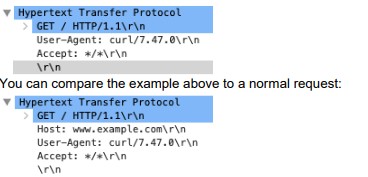
http-req-no-version-string-small-pkt
If this field is set to 1, an HTTP request that is less than 50 bytes and is missing the HTTP version string "HTTP/ x.y " has been found.
Additional Details
None
Context Capture
You can compare the topmost detected request to the normal request directly below it.

http-req-simple-request
If this field is set to 1, an HTTP simple request missing the HTTP version string "HTTP/ x.y " has been found.
Additional Details
None
Context Capture
You can compare the topmost detected request to the normal request directly below it.

http-req-
uri
-path-length
Length of the URI path, not including the query string (up to and including the '?').
Additional Details
None
Context Capture
Qualifiers: This context can use the HTTP method to limit signatures in HTTP headers with specific HTTP methods.

http-req-
uri
-tilde-count-num
Number of "~" characters in the path (same path that http-req- uri -path provides).
Additional Details
None
Context Capture
The encoded characters below are included in this context.
Qualifiers: This context can use the HTTP method qualifier to limit signatures to HTTP headers with specific HTTP methods.

http-
rsp
-code
The number corresponding to the HTTP response code.
Additional Details
None
Context Capture
This context provides the integer highlighted in yellow.
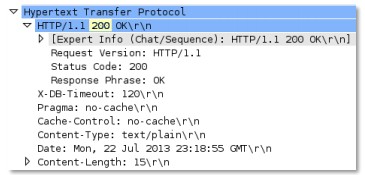
http-
rsp
-content-length
Content length of a HTTP response.
Additional Details
None
Context Capture
This context provides the integer highlighted in yellow.
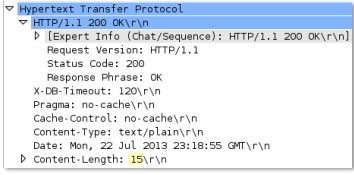
http-
rsp
-total-headers-
len
Length of the HTTP response headers, not including the HTTP status banner.
Additional Details
None
Context Capture
This context provides the content-length of the text highlighted in yellow.
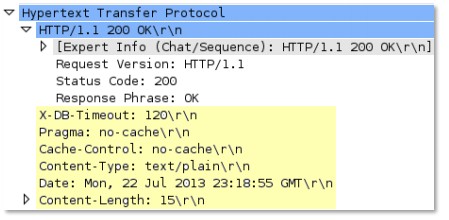
iccp
-req-
func
-code
ICCP function codes such as read, write, identify, and rename can be identified using the iccp - reqfunc -code context.
Additional Details
This context identifies the 1-byte function code value. In this case, the read function code has a hex value of 0xa4 and the corresponding decimal value is 164, which has to be entered while creating the custom application.
Context Capture
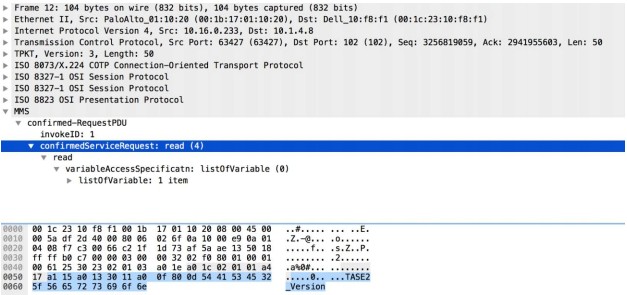
ike
-req-payload-type
Indicates the IKE payload type (identified by the Next payload entry) following the header in the requester’s IKE message.
Additional Details
None
Context Capture
This context matches the text highlighted in yellow.
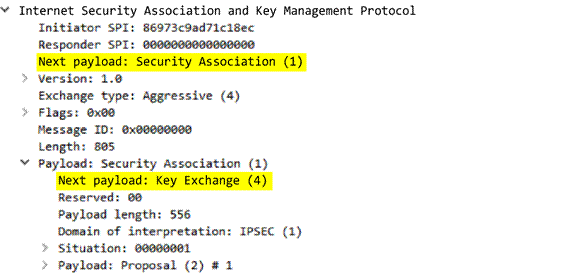
ike
-
rsp
-payload-type
Indicates the IKE payload type (identified by the Next payload entry) following the header in the responder’s IKE message.
Additional Details
None
Context Capture
This context matches the text highlighted in yellow.
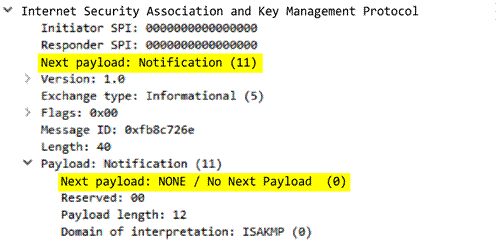
ike
-req-payload-length
Indicates the length of a single payload entry contained inside of the requester’s IKE packet, which itself may contain multiple payloads.
Additional Details
None
Context Capture
This context matches the text highlighted in yellow.
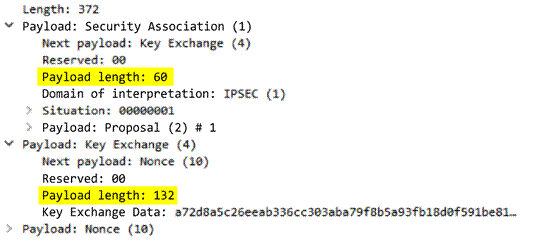
ike
-
rsp
-payload-length
Indicates the length of a single payload entry contained inside of the responder’s IKE packet, which itself may contain multiple payloads.
Additional Details
None
Context Capture
This context matches the text highlighted in yellow.
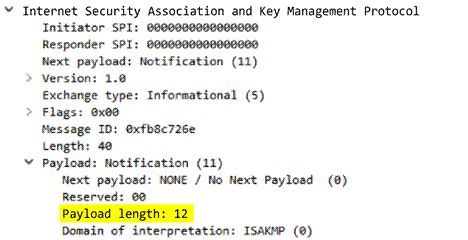
ike
-version
Indicates the version of the IKE protocol used in the exchange.
Additional Details
None
Context Capture
This context matches the text highlighted in yellow.

imap
-req-
cmd
-param-
len
Total length of all parameters of an IMAP command.
Additional Details
None
Context Capture
This context provides the length of the text highlighted in yellow.
Qualifiers: This context can use the IMAP command qualifier to limit signatures to specific IMAP commands.

imap
-req-first-param-
len
Length of the first parameter of an IMAP command.
Additional Details
None
Context Capture
This context provides the length of the text highlighted in yellow.
Qualifiers: This context can use the IMAP command qualifier to limit signatures to specific IMAP commands.

imap
-req-param-
len
-from-second
Total length of all parameters of an IMAP command, not including the first.
Additional Details
None
Context Capture
This context provides the length of the text highlighted in yellow
This context can use the IMAP command qualifier to limit signatures to specific IMAP commands.

irc
-req-protocol-payload
![]()
The payloads of the prefix, commands, and parameters of an IRC request. Does
not cover the entire payload.
Context Capture
This context covers the sections called out in red.
irc
-
rsp
-protocol-payload
The payloads of the prefix, commands, and parameters of an IRC response. Does not cover the entire payload.
Context Capture
This context covers the sections called out in red.

ntlm-req-auth-v1
Detects and identifies the NTLM version contained in the NTLM response. If this field is set to 1, the protocol has been detected; if set to 0, the protocol has not been detected. Does not cover the entire payload.
Context Capture
This context covers the sections called out in blue.

ntlm-req-auth-v2
Detects and identifies the NTLMv2 version contained in the NTLM response. If this field is set to 1, the protocol has been detected; if set to 0, the protocol has not been detected. Does not cover the entire payload.
Context Capture
This context covers the sections called out in blue.
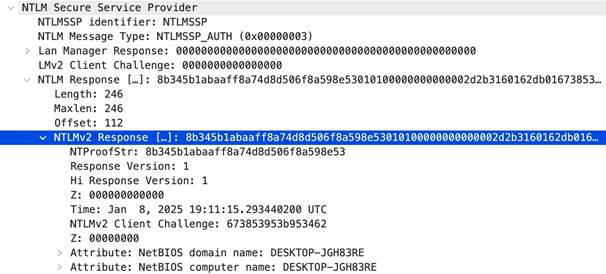
open-
vpn
-req-protocol-payload
The payload of an OpenVPN request.
Context Capture

pfcp
-req-msg-type
Indicates the PFCP message type value in the requester’s Packet Forwarding Control Protocol (PFCP) message header.
Additional Details
None
Context Capture
This context matches the highlighted text.

pfcp
-
rsp
-msg-type
Indicates the PFCP message type value in the responder’s Packet Forwarding Control Protocol (PFCP) message header.
Additional Details
None
Context Capture
This context matches the highlighted text.

smtp-req-
helo
-argument-length
Length of the argument to the SMTP “HELO” command.
Additional Details
None
Context Capture
This context provides the length of the text highlighted in yellow.

smtp-req-mail-argument-length
Length of the argument to the SMTP “MAIL FROM” command.
Additional Details
None
Context Capture
This context provides the length of the text highlighted in yellow.

smtp-req-
rcpt
-argument-length
Length of the argument to the SMTP “RCPT TO” command.
Additional Details
None
Context Capture
This context provides the length of the text highlighted in yellow.

sctp
-req-
ppid
This context matches an SCTP Payload Protocol Identifier (PPID).
Additional Details
A PPID is a 32-bit unsigned integer value that represents an application (upper layer) specified protocol identifier. It identifies the type of information being carried in a SCTP DATA chunk.
Context Capture
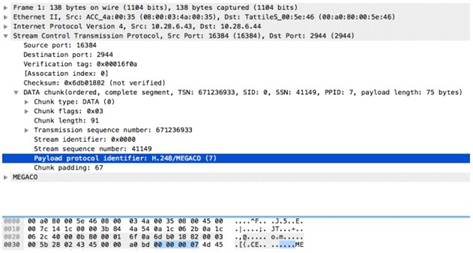
ssl
-req-client-hello-
ext
-type
Detects the extension type listed in the TLS client hello message.
Additional Details
None
Context Capture
This context provides the highlighted text, in this case, the encrypted Server Name extension present in the TLS Client Hello message. To detect this extension, specify ssl -req-client-hello- exttype equals 65486.
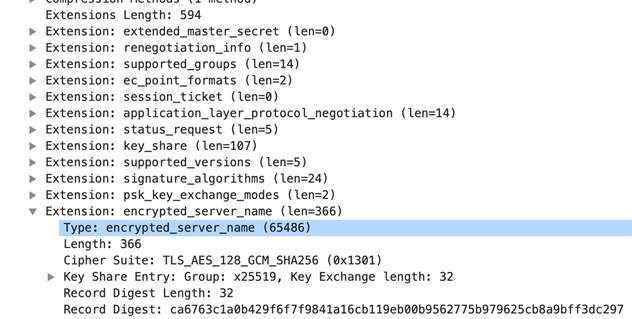
ssl
-req-client-hello-missing-
sni
When this field is set to 1, an SSL client hello without the presence of an SNI (Server Name Indication) entry during the SSL negotiation process, is detected.
Additional Details
None
Context Capture
The following SSL client hello examples show requests with and without an SNI, respectively.
With SNI Entry:
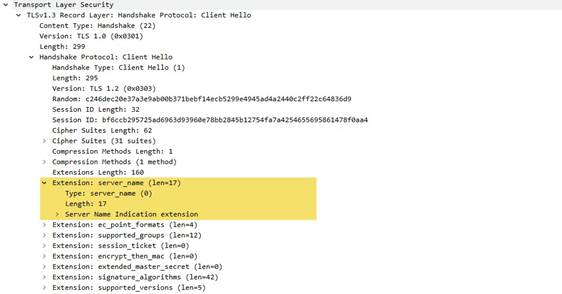
Without SNI Entry:
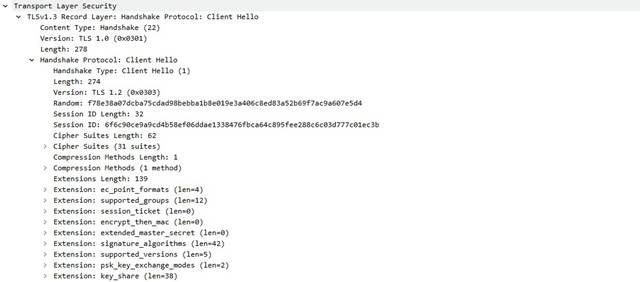
ssl
-
rsp
-version
Detects the SSL version listed in the SSL server hello handshake.
Additional Details
None
Context Capture

stun-req-
attr
-type
This context identifies the 2-byte attribute type value in STUN server requests and responses.
Additional Details
In this case, the hex is 0x0003 and the custom application will take a decimal equivalent value of 3.
Context Capture
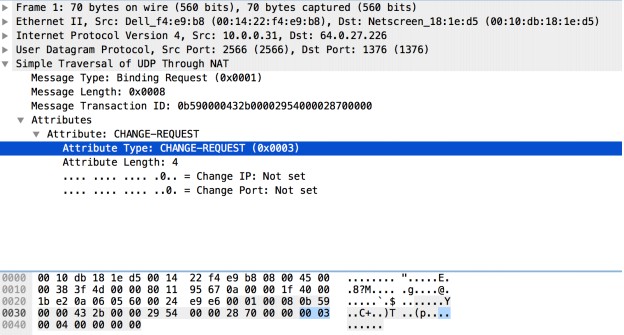
panav
-
rsp
-zip-compression-ratio
This context detects the zip compression ratio of files downloaded over HTTP.
Additional Details
The data compression ratio compares the uncompressed size and the compressed size of a file.
This context can be used to identify a zip bomb or files with large data compression ratios.
Context Capture
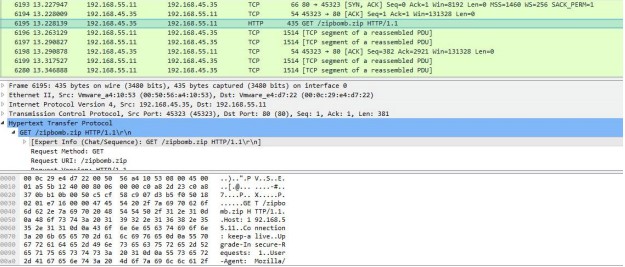
Context
Qualifiers
Qualifiers lessen the chance of false positives by restricting the locations where the firewall can find a given pattern. In other words, a signature matches only when the firewall detects the pattern inside a specific qualifier, which corresponds to a specific context. For example, you might use the http-method qualifier to specify that a http-req- uri -path pattern matters when found inside a HTTP GET method.

FTP
Command Qualifiers
FTP
Vendor ID Qualifiers
HTTP Header Field Qualifiers
HTTP Method Qualifiers
IMAP Command Qualifiers
RTSP Method Qualifiers
SMTP Method Qualifiers
FTP Command Qualifiers
FTP command qualifiers can be added to custom signatures that use FTP-related contexts to limit a match condition to specific FTP commands.
|
ABOR |
ACCT |
ALLO |
APPE |
AUTH |
CDUP |
CWD |
|
DELE |
EHLO |
ERPT |
HELO |
LIST |
MDTM |
MKD |
|
MODE |
NLIST |
OPTS |
PASS |
PASV |
PBSZ |
PORT |
|
PWD |
QUIT |
REIN |
REST |
RETR |
RMD |
RNFR |
|
RNTO |
SITE |
SIZE |
SMNT |
STAT |
STOR |
STOU |
|
STRU |
SYST |
TEST |
TYPE |
UNKNOWNCOMMAND |
UNLOCK |
USER |
|
XCRC |
XMD5 |
XSHA1 |
|
|
|
|
FTP Vendor ID Qualifiers
FTP vendor ID qualifiers can be added to custom signatures that use FTP-related contexts to limit a match condition to specific FTP clients.
|
CEASERFTP |
EASY_FILE_SH |
ARING_FTPFILE_COPA_FTP |
FREEFTPD |
MICROSOFTFT |
PNETTERM |
|
PROFTPD |
SERV_U |
UNKNOWN_F |
TP_SERVERVSFTPD |
WARFTPD |
WS_FTP |
|
WUFTP |
|
|
|
|
|
HTTP Header Field Qualifiers
HTTP header field qualifiers can be added to custom signatures that use HTTP-related contexts to limit a match condition to HTTP headers that have specific values for select header fields.
|
ACCEPT_LANG |
UAUTHORIZATIGE |
ONCONTENT_EN |
CODICONTENT_LENG |
GTHCONTENT_TYP |
EHOST |
|
IF_MOD_SINCE |
SUBSCRIBE_H |
DRTRANSFER_EN |
CODINGUNKNOWN_H |
DRX_FORWARD_ |
FOR |
HTTP Method Qualifiers
HTTP method qualifiers can be added to custom signatures that use HTTP-related contexts to limit a match condition to HTTP headers that use specific HTTP methods.
|
BCOPY |
BDELETE |
BITS_POST |
BMOVE |
BPROPFIND |
BROPPATCH |
CCM_POST |
|
CONNECT |
COPY |
DELETE |
GET |
HEAD |
LINK |
LOCK |
|
MCKCOL |
MOVE |
NOTIFY |
OPTIONS |
POLL |
POST |
PROPFIND |
|
PROPPATCH |
PROXY_SUC |
CESSPUT |
RPC_CONNE |
CTSEARCH |
SMS_POST |
SOURCE |
![]() SUBSCRIBE
TRACE
TRACK
UNKNOWN_METHODUNLINK UNLOCK
UNSUBSCRIBE
SUBSCRIBE
TRACE
TRACK
UNKNOWN_METHODUNLINK UNLOCK
UNSUBSCRIBE
IMAP Command Qualifiers
IMAP command qualifiers can be added to custom signatures that use IMAP-related contexts to limit a match condition to specific IMAP commands.
|
APPEND |
AUTHENTIC |
ATECAPABILITY |
CHECK |
CLOSE |
COPY |
CREATE |
|
DELETE |
EXAMINE |
EXPUNGE |
FETCH |
FIND |
IDLE |
LIST |
|
LOGIN |
LSUB |
NOOP |
RENAME |
SEARCH |
SELECT |
STARTTLS |
|
STATUS |
SUBSCRIBE |
UNKNOWN |
_COMMANDUNSUBSCRI |
BE |
|
|
RTSP Method Qualifiers
RTSP method qualifiers can be added to custom signatures that use RTSP-related contexts to limit a match condition to specific RTSP methods.
|
ANNOUNCES |
DESCRIBE |
GET_PARAMETER |
OPTIONS |
PAUSE |
|
PLAY |
RECORD |
REDIRECT |
SET_PARAMETER |
SETUP |
|
SETUP_PARAMET |
ERTEAR_DOWN |
UNKNOWN_MET |
HOD |
|
SMTP Method Qualifiers
SMTP method qualifiers can be added to custom signatures that use SMTP-related contexts to limit a match condition to specific SMTP methods.
|
AUTH |
BDAT |
DATA |
EHLO |
HELO |
|
QUIT |
|
RCPT |
RSET |
SAML |
SEND |
SOML |
STARTTLS |
|
|
USER |
VRFY |
XEXCH50 |
XEXPS |
XLINK2STAT |
EXTELLMAIL |
|
UNKNOWN_CMD
IPS Signature Converter Plugin for Panorama
![]()
Snort and Suricata are open-source intrusion prevention system (IPS) tools that
use uniquely formatted rules to detect threats. The IPS Signature Converter
enables you to leverage these rules for immediate threat protection by
translating the IPS signatures into
custom Palo Alto
Networks threat
signatures
. You can then register the signatures on Palo Alto
Networks firewalls in specified device groups and enforce policy using
Vulnerability Protection and Anti-Spyware
Security
Profiles
.
Additionally, you can export rules that list IP address indicators of compromise (IOC) and use the resultant text file as an external dynamic list to enforce policy on the entries contained in the list.
• About the IPS Signature Converter Plugin
• Convert Rules Using the Panorama Web Interface
• Convert Rules Using the Panorama CLI
• Convert Rules Using the Panorama XML API
• Install the IPS Signature Converter Plugin
• CLI Quick Start
•
Troubleshooting the IPS Signature Converter
About the IPS Signature Converter Plugin
The IPS Signature Converter plugin for Panorama provides an automated solution for converting rules from a third-party intrusion prevention system (IPS)—Snort or Suricata—into custom Palo Alto Networks threat signatures . You can then register these custom signatures on firewalls that belong to device groups you specify and use the signatures to enforce policy in Vulnerability Protection and Anti-Spyware Security Profiles .
Snort and Suricata are open-source IPS tools that use uniquely formatted rules to detect threats. Organizations that share threat intelligence often distribute security advisories with these rules to help you implement the appropriate protections on your firewall. The IPS Signature Converter plugin enables you to immediately act upon these advisories and protect your network against any threats you receive in Snort or Suricata format.
After you install the IPS Signature Converter plugin on
Panorama, you can upload rules for conversion and import them to your device
groups. You can also export rules containing indicators of compromise (IOC) to
a text file that you can use as an
external dynamic
list
to enforce policy on the entries contained in the list.
Convert Rules Using the Panorama Web Interface
After you install the intrusion prevention system (IPS) signature converter plugin, you can use it to translate Snort and Suricata rules into custom Palo Alto Networks threat signatures . You can then register the custom signatures on Palo Alto Networks firewalls that belong to device groups that you specify and use these customer signatures in your Vulnerability Protection and Anti-Spyware Security Profiles .
Additionally, you can export rules that list IP address indicators of compromise (IOC) and use the resultant text file as an external dynamic list to enforce policy on the entries contained in the list.
The following example uses this Snort rule:
alert tcp any any -> any any (msg:" Malformed_UA "; content:" UserAgent : Mozillar /"; depth:500; sid:99999999;)
STEP 1 | Select Panorama > IPS Signature Converter > Manage .
STEP 2 | Upload Signatures .
STEP 3 | Select one of two methods for uploading your rules:
• Browse to and select a text file.
![]() You cannot convert binary file types, such as .pdf or .docx.
You cannot convert binary file types, such as .pdf or .docx.
• Paste the rules directly into the text box.
![]() You can upload only 300 rules at a time for conversion.
You can upload only 300 rules at a time for conversion.

STEP 4 | Click OK .
Your signatures will populate at least one of the following tabs: Succeeded , Succeeded with Warnings , Failed , Duplicates , or Existing Coverage .
STEP 5 | ( Optional ) Export rules to an indicator of compromise (IOC) list.
Panorama converts a rule that does not contain the keywords content or PCRE into an IOC List . Export IOC List to group these rules into a text file that you can use as an external dynamic list for your Security policy rules.
1. Select Export IOC List .
A dialog displays any rules that converted as IOC List .
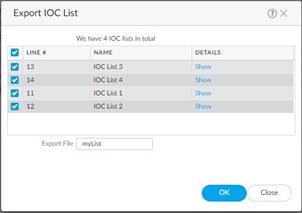
2. Select the rules that you want to export.
3. Enter the name of the file to which you want to export your rules.
4. Click OK .
The exported text file will appear in your downloads folder.
STEP 6 | Commit converted signatures to Panorama.
1. Select the signatures you want to upload.

2. Import Custom Signatures .
3. Select a Device Group from the drop-down.
Select Shared to make the signatures available to all device groups.
4. Under the Destination column, select whether to commit the signatures as Vulnerability or Spyware .
5. Click OK .
6.
In the top right of the screen, select
![]() and
Commit to
Panorama
.
and
Commit to
Panorama
.
7. Verify that you successfully committed your signatures.
1. Select Objects > Custom Objects .
2. Select either Spyware or Vulnerability , depending on how you categorized your signatures in the previous step .
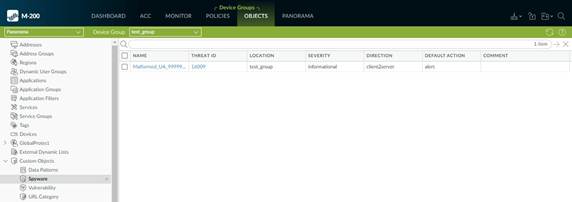
STEP 7 | Push the signatures to managed firewalls.
![]() The firewalls must be
running PAN-OS 10.0 or a later release with an active
Threat
Prevention
license.
The firewalls must be
running PAN-OS 10.0 or a later release with an active
Threat
Prevention
license.
STEP 8 |
Test your
signatures
on a firewall in the device group to which you pushed the
signatures.
Convert Rules Using the Panorama CLI
In addition to the web interface, you can use the command-line interface (CLI) to convert Snort
® and Suricata rules into custom PAN-OS threat signatures. This example uses the following Snort rule:
|
alert tcp $HOME_NET 2589 -> $EXTERNAL_NET any ( msg :"MALWARE-BACKDOOR - Dagger_1.4.0"; flow:to_ client,established ; content:"2|00 00 00 06 00 00 00|Drives|24 00| ",depth 16; metadata:ruleset community; classtype:misc -activity ; sid:105; rev:14 ; ) |
You can not convert rule files through the CLI. If you want to convert a file with multiple rules in it, use the Panorama web interface .
The CLI Quick Start contains additional CLI commands.
STEP 1 | Encode the rule in Base64 format.
You can do this using a free, browser-based tool ( example ).
![]() Before encoding the rule,
ensure there are no line breaks. Otherwise, the line breaks are encoded and
cause the rule conversion in the subsequent step to fail.
Before encoding the rule,
ensure there are no line breaks. Otherwise, the line breaks are encoded and
cause the rule conversion in the subsequent step to fail.
STEP 2 | Convert the encoded rule:
admin@demo-panorama-vm>
request plugins ips-signature-converter convert b64-encode
<base64_encoded_rule>
LINE# TITLE RESULT TYPE CONVERTER_MSG
1 Converted_MALWARE - Succeed Plain None
BACKDOOR -
Dagger_1.4.0_105
Summary: Total:1, Succeed:1, Warnings:0, Existing Coverage:0,
Duplicated:0, Failed:0
STEP 3 | ( Optional ) Change the signature type.
If your signature is for protection against spyware, you can set the type as spyware so that Panorama imports it as an Anti-Spyware signature. Otherwise, rules convert as vulnerability by default.
|
admin@demo-panorama-vm>
request plugins ips-signature-converter
set-properties signature-type <vulnerability/spyware > lines < line_number > LINE# TITLE SIG_TYPE ACTION SEVERITY 1 Converted_MALWARE -BACKDOOR - spyware alert low Dagger_1.4.0_105 |
STEP 4 | Import the signature to Panorama:
admin@demo-panorama-vm > request plugins ips-signatureconverter import-custom-signatures device-group < device_group > lines < line_number >
LINE# TITLE THREAT_ID STATUS DETAIL
1 Converted_MALWARE -BACKDOOR - 16002 Success Import
Succeeded
Dagger_1.4.0_105
![]() If you do not specify a
device-group
, Panorama
imports the signature to the Shared location.
If you do not specify a
device-group
, Panorama
imports the signature to the Shared location.
STEP 5 | Commit your changes to Panorama:
admin@demo-panorama-vm # commit
Commit job 707 is in progress. Use Ctrl+C to return to command
prompt
...23%.59%80%.......90% ..... 100%
Configuration committed successfully
STEP 6 | Push the signatures to a device group:
@demo -panorama-vm> commit-all shared-policy devicegroup < device_group >
Job enqueued with jobid 709
709
STEP 7 | Log in to a firewall in the device group that you specified in the previous step to verify that the push succeeded:
|
admin@PA-3220# show threats <vulnerability/spyware> < threat_id > ~ spyware { 16002 { signature { standard { ips_converted_pattern { and-condition { "And Condition 1" { or-condition { "Or Condition 1" { operator { pattern-match { pattern "2\x00 00 00 06 00 00 00\ xDrives \x24 00\x "; context tcp -context- free; negate no; |
|
} } } } } } order-free no; scope session; |
Convert Rules Using the Panorama XML API
The Panorama XML API enables you to convert Snort and Suricata, open-source intrusion prevention system (IPS) rules to custom Palo Alto Networks threat signatures. You can then use the XML API to import the custom rules as Vulnerability Protection and Anti-Spyware Security profiles.
®
Because the PAN-OS XML API uses a tree of XML nodes, you must specify the correct type and action in your API request along with the XPath Node Selection . See Explore the API to learn how to construct XML requests.
You can not convert rule files through the CLI. If you want to convert a file with multiple rules in it, use the Panorama web interface .
STEP 1 | Convert Snort or Suricata policy rules to Base64 URL encoded format.
You can use a free, browser-based tool ( example .
This example uses the following Snort rule:
alert tcp $HOME_NET any -> $EXTERNAL_NET any ( msg:"ET CHAT Yahoo IM conference message"; flow: to_server,established ; content:"YMSG "; nocase ; depth: 4; content:"|00 1D|"; offset: 10; depth: 2; reference:url,doc.emergingthreats.net/2001258; classtype:policyviolation ; sid:2001258; rev:7; metadata:created_at 2010_07_30, updated_at 2010_07_30;)
STEP 2 | Make a request to convert the rule to a custom PAN-OS threat signature.
|
curl -X POST ’https:// <firewall> / api /?key= key &type=op&cmd=<request><plugins><ips-signatureconverter><convert><b64-encode> YWxlcnQgdGNwICRIT01FX05FVCBhbnkgLT4gJEVYVEVSTkF MX05FVCBhbnkgKG1zZzoiRVQgQ0hBVCBZYWh vbyBJTSBjb25mZXJlbmNlIG1lc3NhZ2UiOyBmbG93OiB0b19zZXJ2ZXIs ZXN0YWJsaXNoZWQ7IGNvbnRlbnQ6IllNU0ciOyBub2Nhc2U7IGRlcHRoO iA0OyBjb250ZW50OiJ8MDAgMUR8Ijsgb2Zmc2V0OiAxMDsgZGVwdGg
6IDI7IHJlZmVyZW5jZTp1cmwsZG9jLmVtZXJnaW5ndGhyZWF0cy5uZXQvMjAwM TI1ODsgY2xhc3N0eXBlOnBvbGljeS12aW9sYXRpb247IHNpZDoyMDAx
MjU4OyByZXY6NzsgbWV0YWRhdGE6Y3JlYXRlZF9hdCAyMDEwXzA3XzMwLCB1cGRh |
dGVkX2F0IDIwMTBfMDdfMzA7KQ==
</b64-encode></convert></ipssignature-converter></plugins></request>’
The response contains details about the rules (see previous details for more information):
|
<response status="success"> <result> <result> <status>pass</status> <msg> <convert-result> <extra-msg></extra-msg> <failed-count>0/1</failed-count> <failed></failed> <duplicated-count>0/1</duplicatedcount> <duplicated></duplicated> <skipped-count>0/1</skipped-count> <skipped></skipped> <warned-count>1/1</warned-count> <warned> <entry name="1"> <type>plain</type> < sig_type >vulnerability</ sig_type > <line>1</line> <title> Converted_ET CHAT Yahoo IM conference message_2001258</title> |
|
<action>alert</action> <severity>low</severity> <info> <entry name="0">
<msg>[ performance_impact ] use of tcp -context-free (YMSG)</msg> < start_offset >127</ start_offset > < end_offset >131</ end_offset > </entry> </info> </entry> </warned> <succeed-count>0/1</succeed-count> <succeed></succeed> </convert-result> </msg> </result> </result> </response>
|
STEP 3 | Set the properties for rules that you converted.
Use the line number of a converted rule and set the properties. For example:
• Type set to spyware .
• Action when detected set to alert .
• Severity set to low .
curl -X POST 'https://
<firewall> / api /? type=op&key=LUFRPT0&cmd=<request><plugins><ips-signatureconverter><set-properties><default-action>alert</defaultaction><lines>1</lines><severity>low</severity><signaturetype>spyware</signature-type></set-properties></ips-signatureconverter></plugins></request>'
The resulting success message:
|
<response status="success"> <result> <result> <status>pass</status> <msg> <set-properties-result> <entry name="1"> <line>1</line> < sig_type >spyware</ sig_type > <action>alert</action> <severity>low</severity> <status>success</status> </entry> </set-properties-result> </msg> </result> </result> </response>
|
STEP 4 | ( Optional ) View the results of the converted rules.
The following request results in output that displays all successfully converted rules and the properties associated with each.
|
curl-X GET ‘https:// <firewall> /api/?type=op&key= apikey &cmd=<show><plugins><ipssignature-converter><results></results></ips-signature-converter></ plugins></show>
|
The resulting success message:
|
<response status="success"> <result> <result> <status>pass</status> <msg> <line>1</line> <status>warned</status> <rule>alert tcp $HOME_ NET any - > $EXTERNAL_NET any ( msg:"ET CHAT Yahoo IM conference message"; flow: to_server,established ; content:"YMSG "; nocase ; depth: 4; content:"|00 1D|"; offset: 10; depth: 2; reference:url,doc.emergingthreats.net/2001258; classtype:policyviolation ; sid:2001258; rev:7; metadata:created_at 2010_07_30, updated_at 2010_07_30;)</rule> <type>plain</type> < sig_type >spyware</ sig_type > <title> Converted_ET CHAT Yahoo IM conference message _2001258</title> <action>alert</action> <severity>low</severity> |
|
< perf_score >10</ perf_score > < perf_level >high</ perf_level > <info> <entry name="0"> <msg>[ performance_impact ] use of tcp -context-free (YMSG)</msg> < start_offset >127</ start_offset > < end_offset >131</ end_offset > </entry> </info> <signatures> <entry name="0"> <context> <! [CDATA[<entry><signature><standard><entry name=" ips_converted_pattern "><and-condition><entry name="And Condition 1"><or-condition><entry name="Or Condition 1"><operator><pattern-match><pattern>YMSG</pattern><context>tcpcontext-free</context><negate>no</negate></pattern-match> </operator> </entry> </or-condition> </entry><entry name="And Condition 2">< orcondition ><entry name="Or Condition 1"><operator>< patternmatch ><pattern>\x00 1D\x</pattern><context> tcp -context-free</ context><negate>no</negate></pattern-match> </operator> </entry> </or-condition> </entry> </and-condition><order-free>no</orderfree><scope>session</scope></entry> </standard> |
</signature><default-action><alert/></defaultaction><reference><member>doc.emergingthreats.net/2001258</ member><member>Score: 10</member><member>Impact: high</member><member>Reason: use of tcp -context-free</ member></reference>< threatname > Converted_ET CHAT Yahoo IM conference message_2001258</ threatname ><severity>low</ severity><direction>client2server</direction><affectedhost><server>yes</server></affected-host>
STEP 5 | Import the Spyware or Vulnerability rule to your device groups to use in a custom object.
Using the line number of a successfully converted rule, send a request that imports the rule to the shared device group.
|
curl-X GET ‘https:// <firewall> / api /?key= key &type=op&cmd=<request><plugins><ips-signatureconverter><import-custom-sig><lines> 1 </lines></import-custom-sig></ ips -signature-converter></ plugins></request>
|
The resulting success message using line one provides an ID number you can use to find the profile in the web interface.
<response status="success">
<result>
<result> <status>pass</status>
<msg>
<import-result>
<entry name="1">
<line>1</line>
< sid >42556</ sid >
<status>success</status>
|
<msg>command succeeded</msg> </entry> </import-result> </msg> </result> </result> </response>
|
Install the IPS Signature Converter Plugin
®
To convert intrusion prevention system (IPS) rules to custom PAN-OS threat signatures, download and install the IPS Signature Converter on Panorama ™ .
If you have a Panorama high availability (HA) configuration, repeat the installation process on each Panorama peer. When you install the plugin on Panorama peers in an HA pair, install the plugin on the passive peer first and then on the active peer. After you install the plugin on the passive peer, that peer will transition to a non-functional state. When you install the plugin on the active peer, the passive peer will return to a functional state.
Before you install the plugin, ensure that you have the correct version requirements and the latest Applications and Threats content updates .
|
STEP 1 | |
Select Panorama > Plugins . |
|
STEP 2 | |
Enter ips_signature_converter in the search bar. |
|
STEP 3 | |
Refresh
(
|
|
STEP 4 | |
Download (ACTIONS column) the plugin. |
|
STEP 5 | |
Select the version of the plugin that you want to install. |
|
STEP 6 | |
Install the plugin (ACTIONS column). |
CLI
Quick Start
See the list of basic commands below for the intrusion prevention system (IPS) Signature Converter plugin on Panorama ™ . For more information about how to use the command line interface (CLI), see how to Get Started with the CLI .
|
To do this... |
Start here... |
|
|
Convert, import, check performance impact, and configure the properties of signatures |
|
|
|
Set the type, default action, or severity of a signature |
request plugins ips -signature-converter set- properties <line numbers> |
|
|
View information about your converted signatures |
show plugins ips -signature-converter |
|
|
Delete all signatures (does not delete signatures that you imported to Panorama) |
|
Troubleshooting the IPS Signature Converter
If your rules fail to convert, use the following command in the Panorama command-line interface (CLI) to see a detailed summary of the failure:
admin@M-200-49> tail follow yes lines 1 plugins- log plugin_ips_signature_converter.log
The output consists of a list of the logs for each rule and a final summary of the status of their conversion.
Rule Logs
The output first lists the logs for each rule that you submitted for conversion. Each log contains the following fields.
|
Field |
Values |
|
Line |
The line number of the rule. |
|
result |
• True —The rule converted successfully. • False —The rule failed to convert. |
|
type |
• normal —The rule contains a pattern to search packet payloads. • edl —The rule is a list of suspect URLs, IP addresses, or domains. |
|
hash |
A unique identifier for each rule that successfully converted. This output is None if conversion failed. |
|
msg |
Details about a signature with a result of failed or warned . |
Summary
After listing the logs for each rule, the output displays a summary of the conversion results.
|
Field |
The number of rules that... |
|
Total |
Were submitted for conversion. |
|
Succeed |
Converted successfully. |
|
Field |
The number of rules that... |
|
Warned |
Converted successfully but contain minor syntax errors or that pose a risk, such as high performance impact or false-positive rate. |
|
Skipped |
Converted successfully and share a common vulnerabilities and exposures (CVE) identifier with a signature that already exists in the Palo Alto Networks Threat Vault . |
|
Duplicated |
Were repeated in the submission. |
|
Failed |
Failed to convert. |